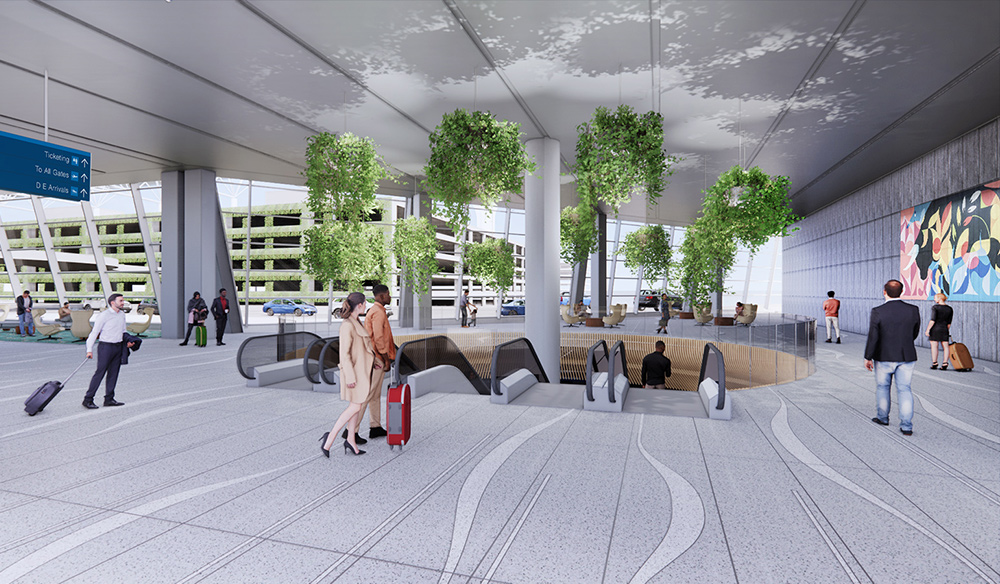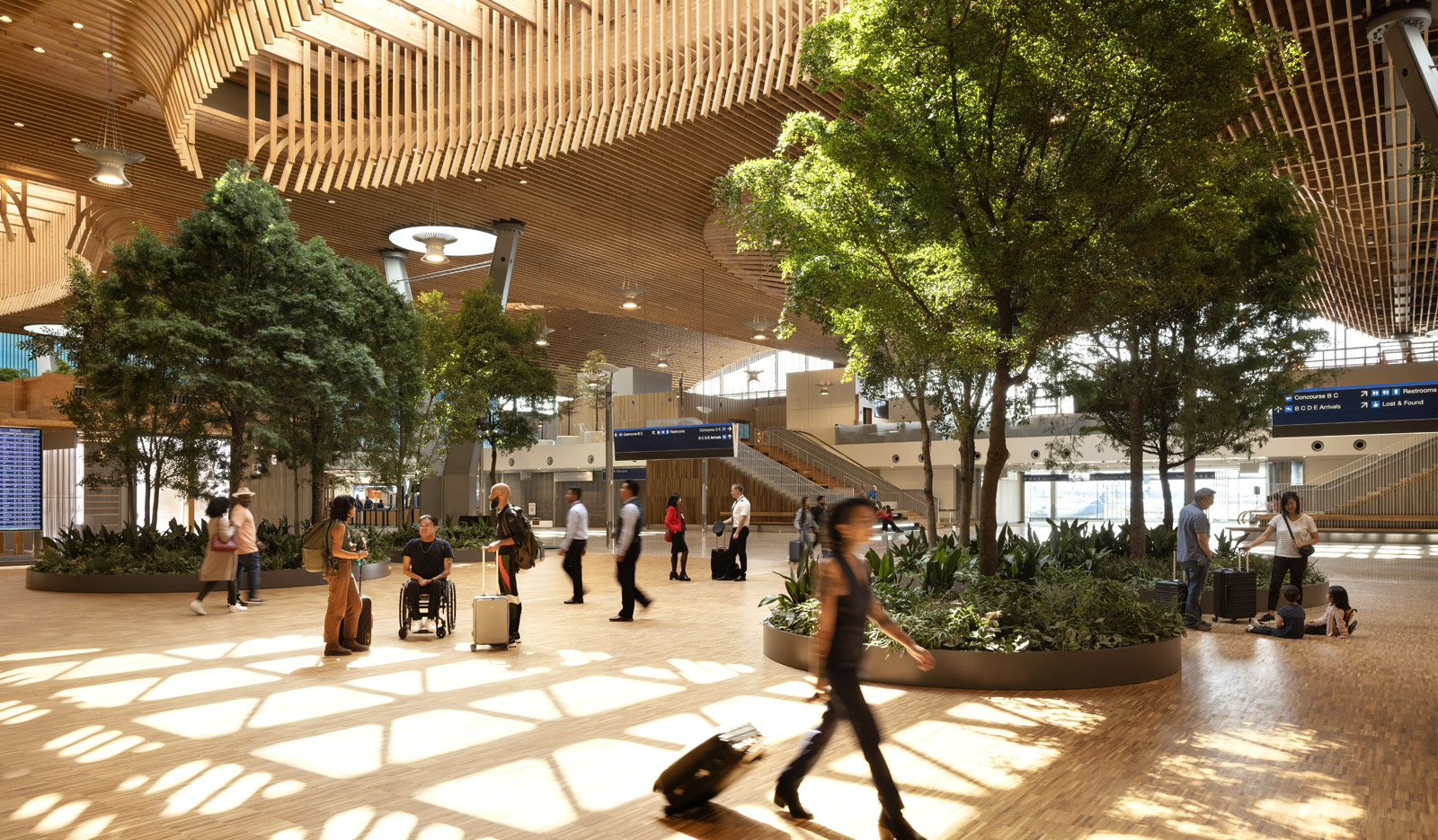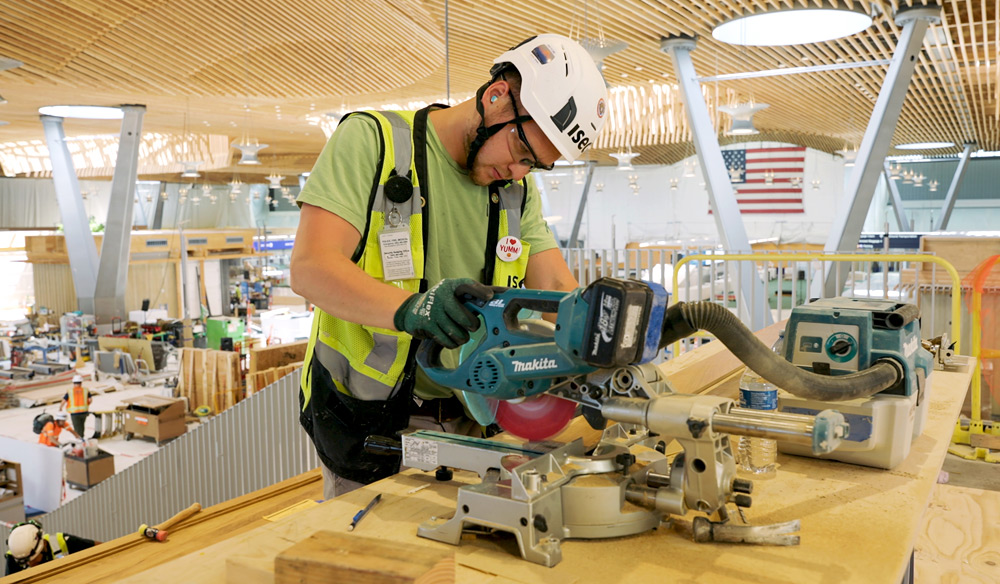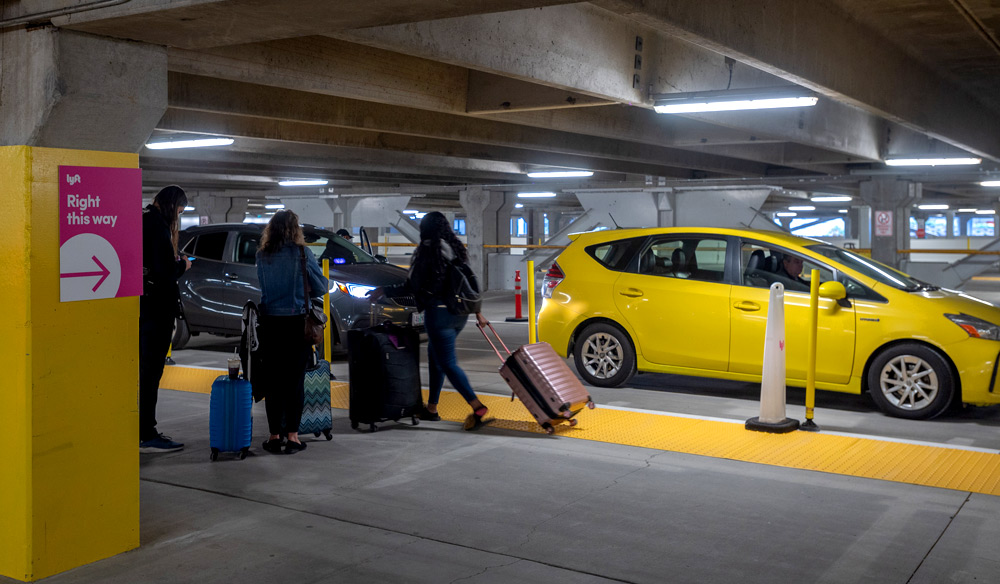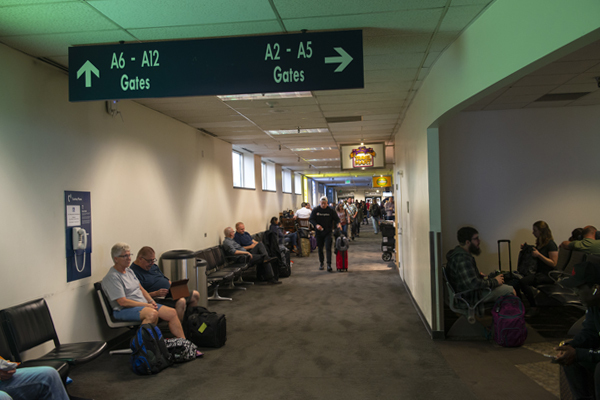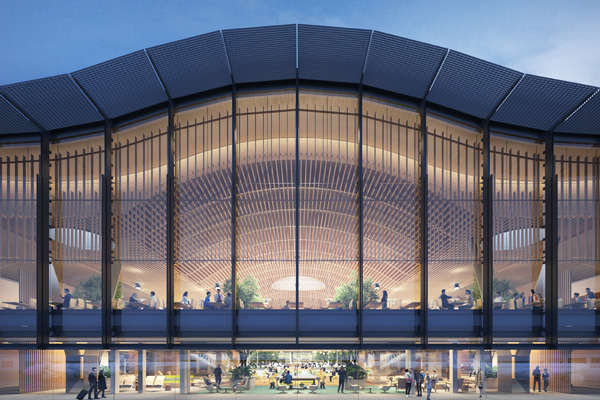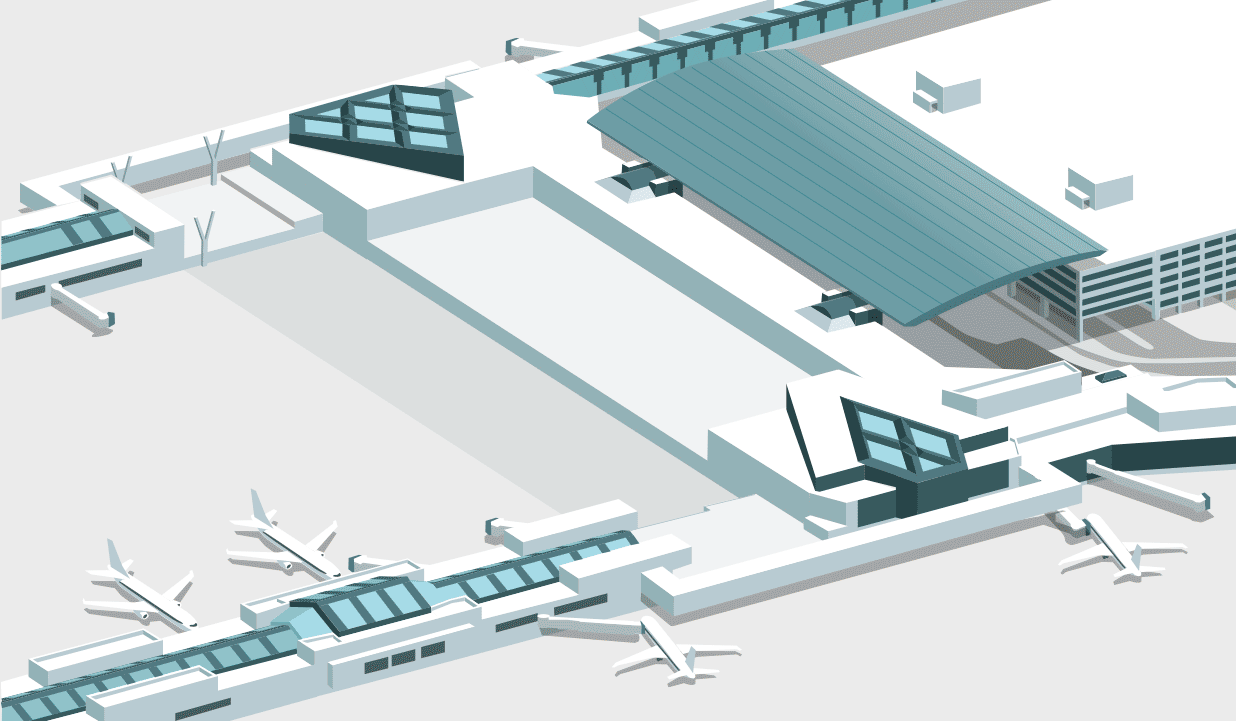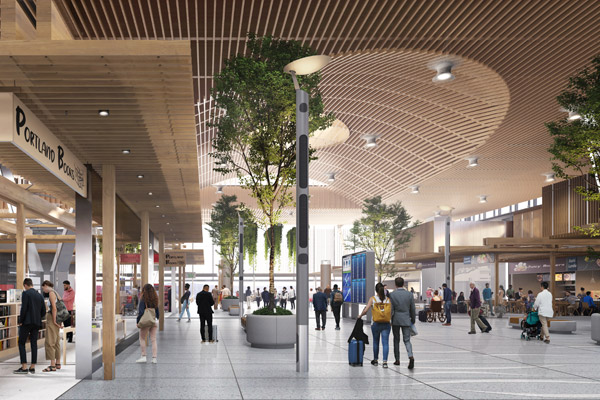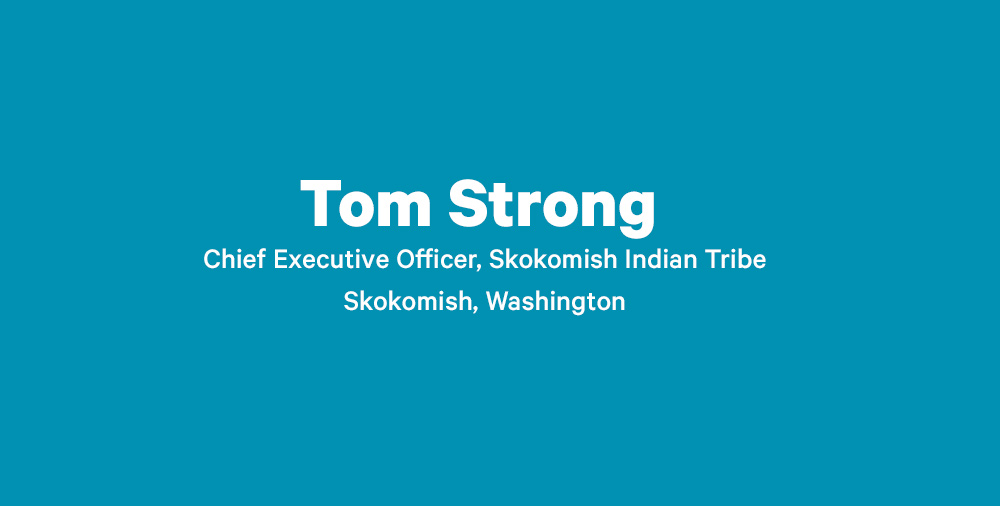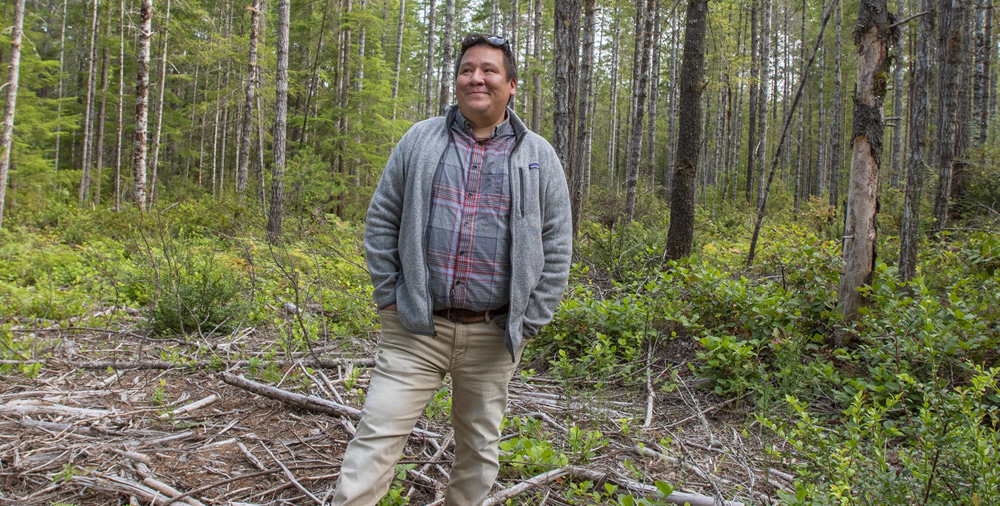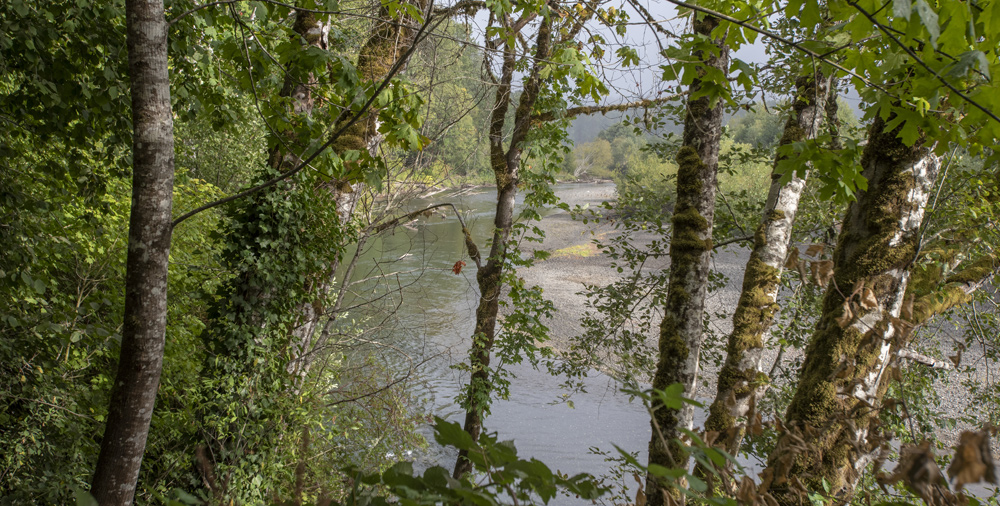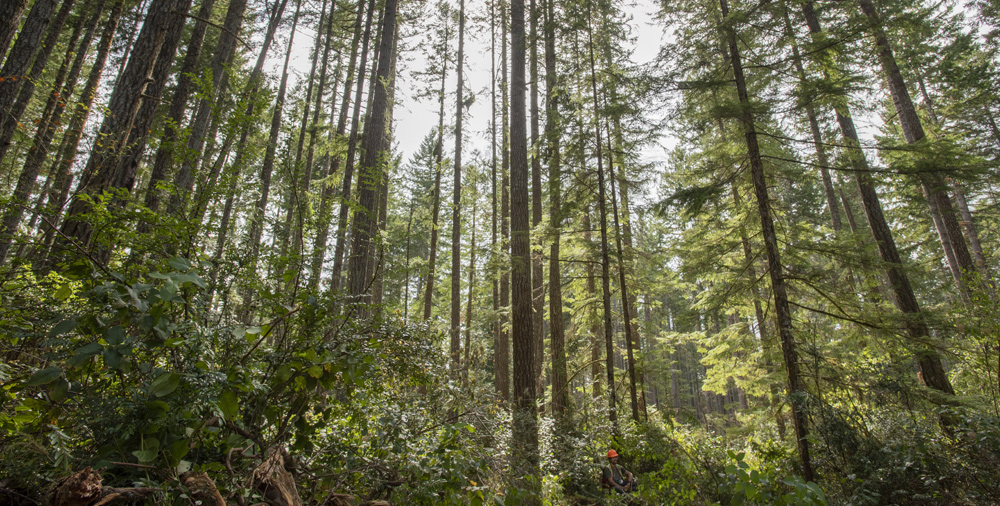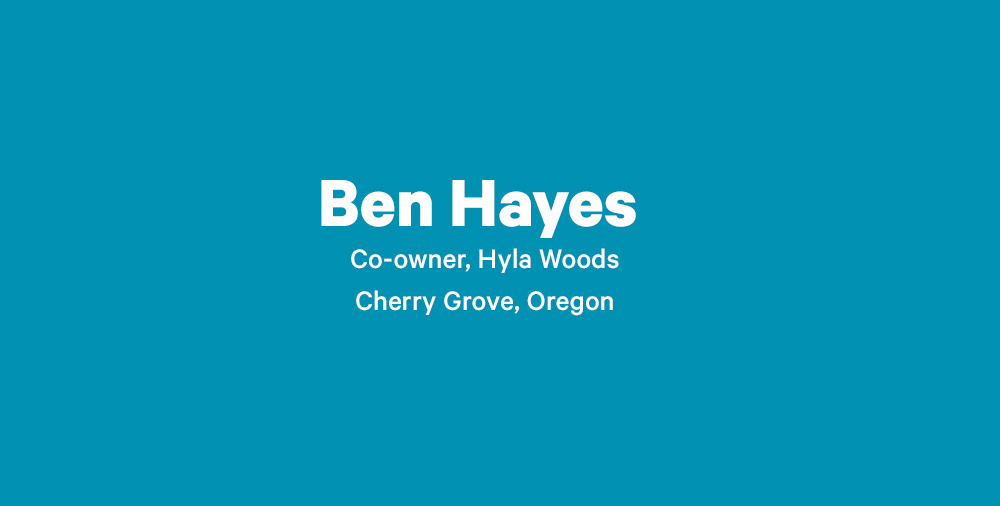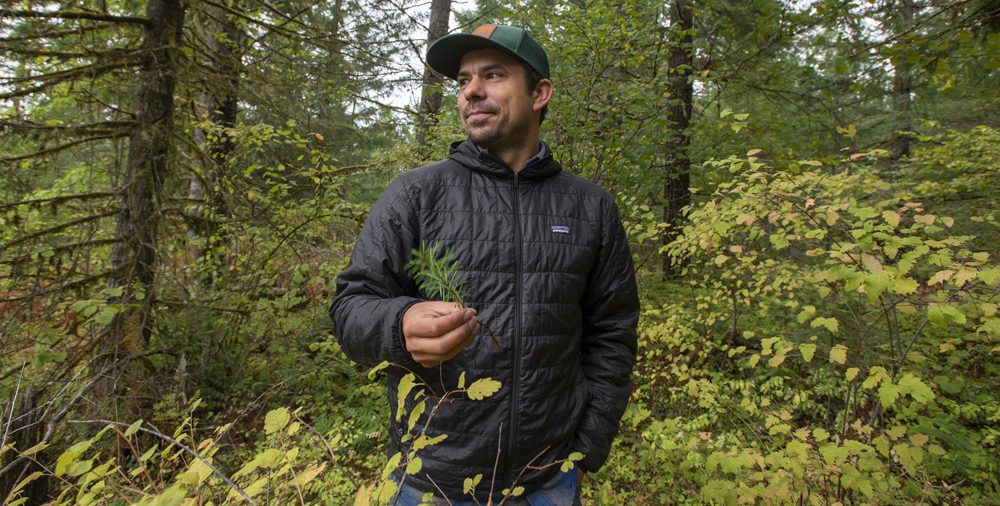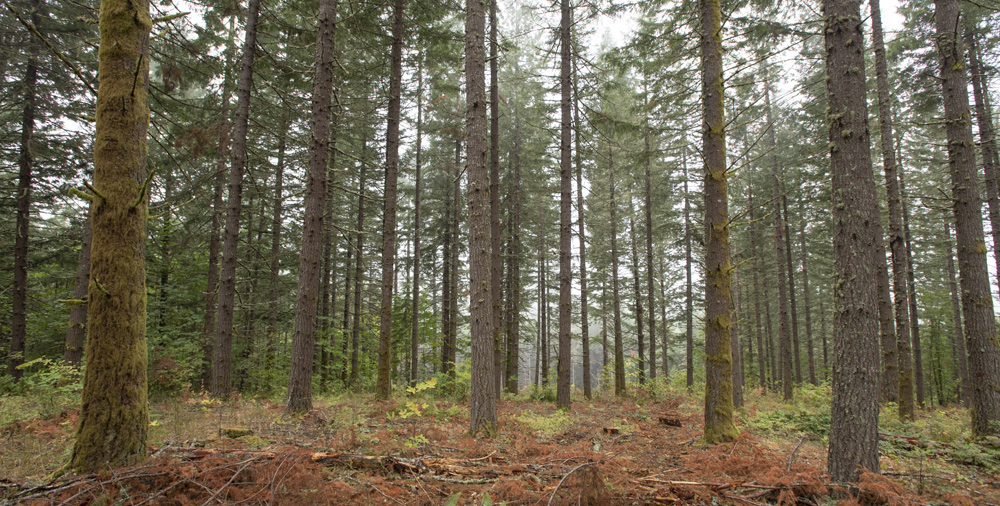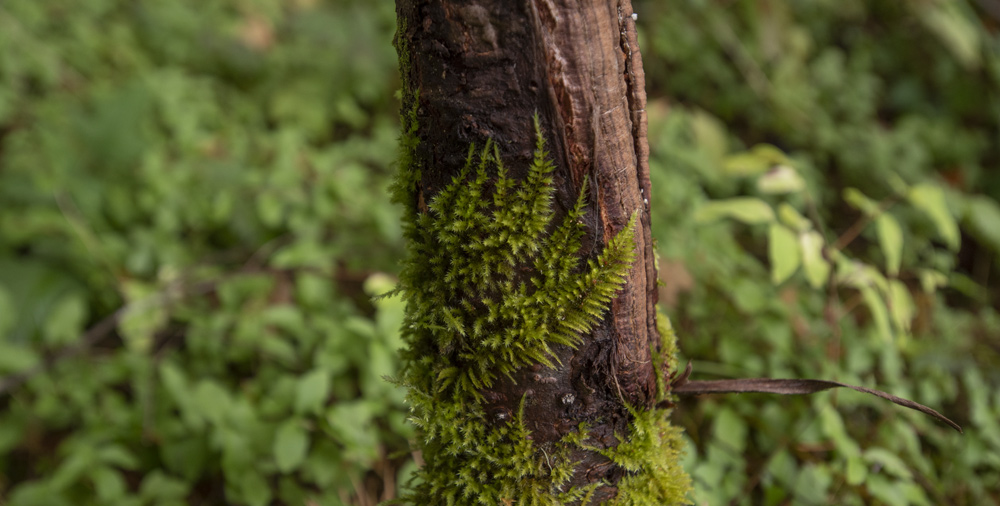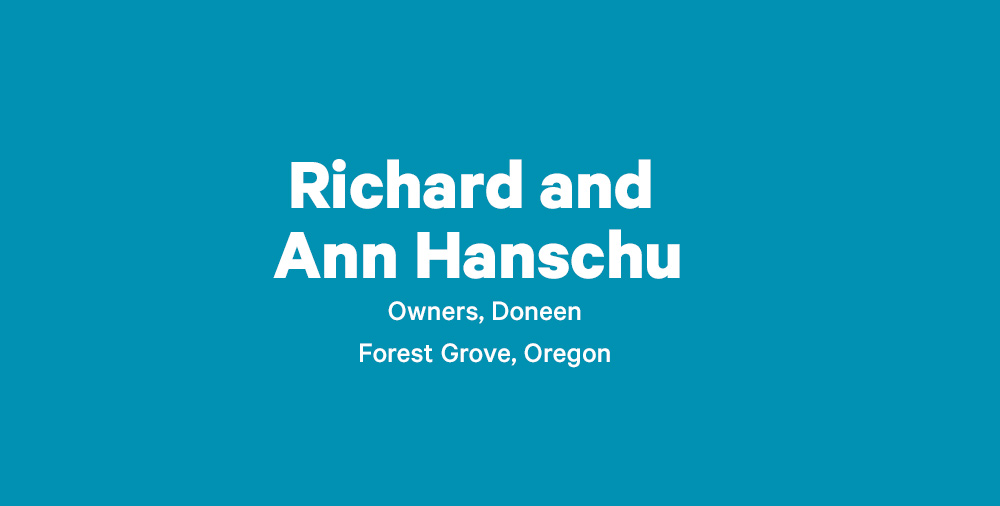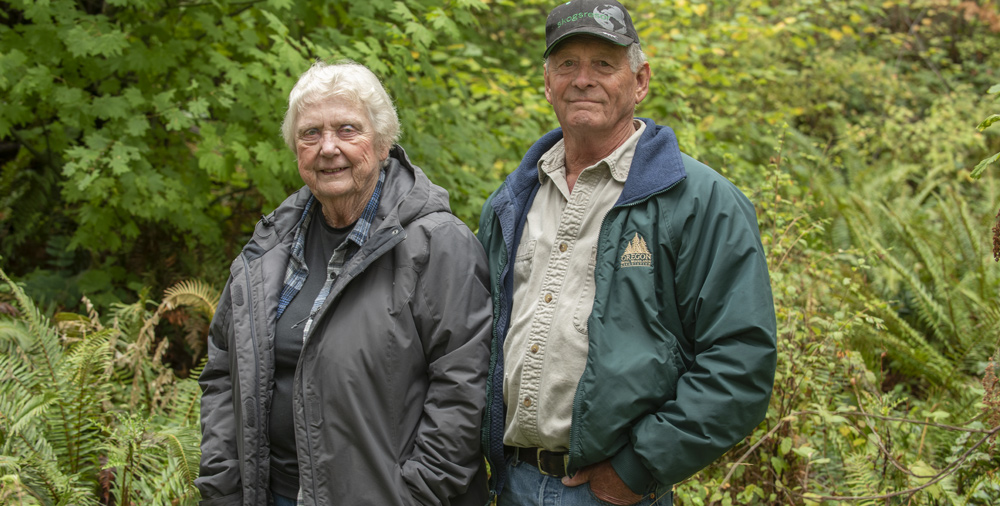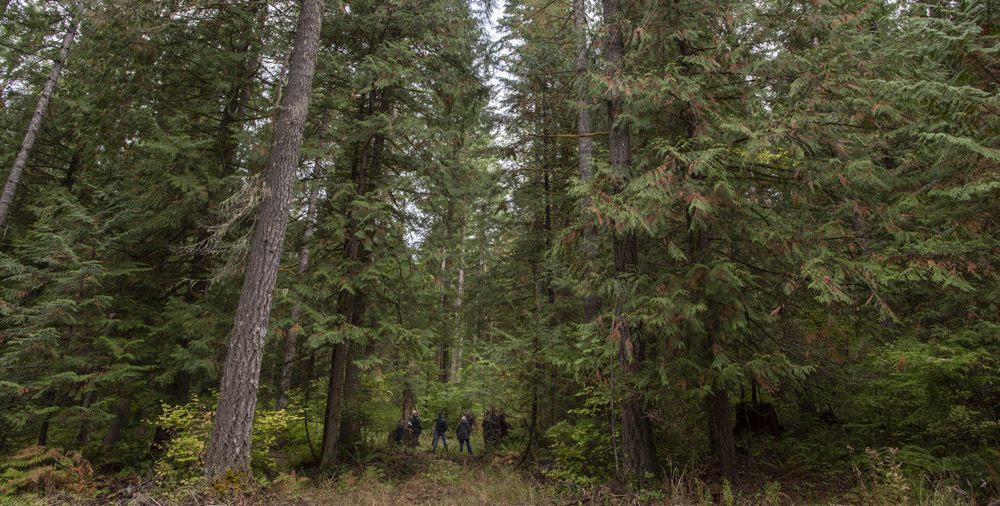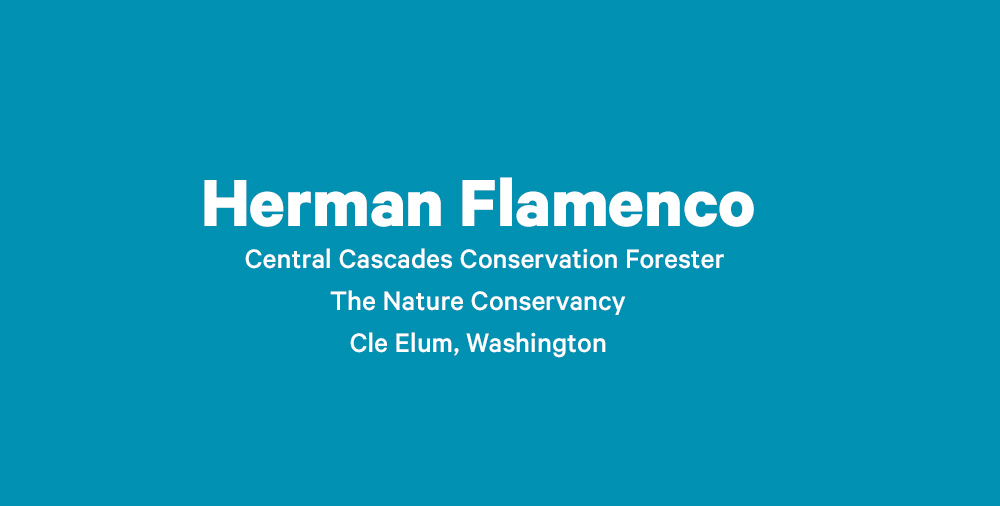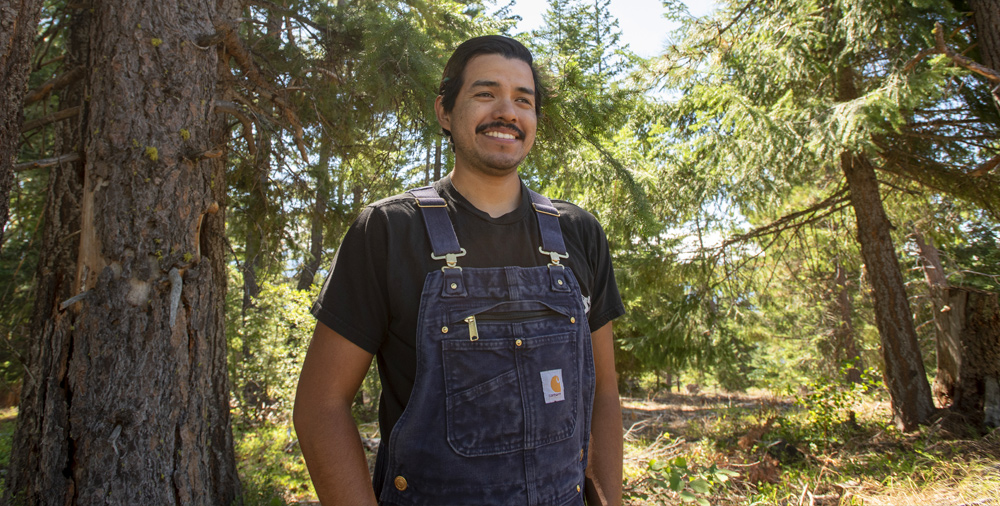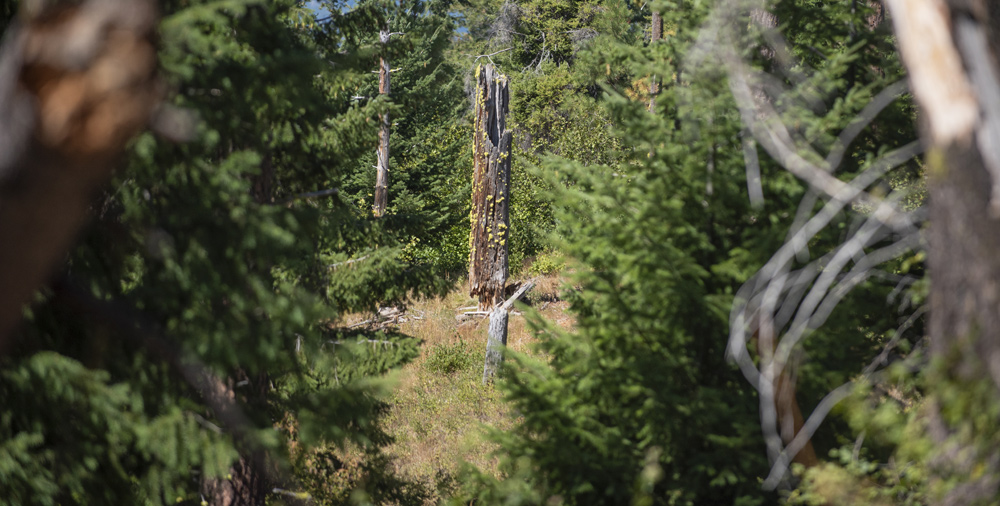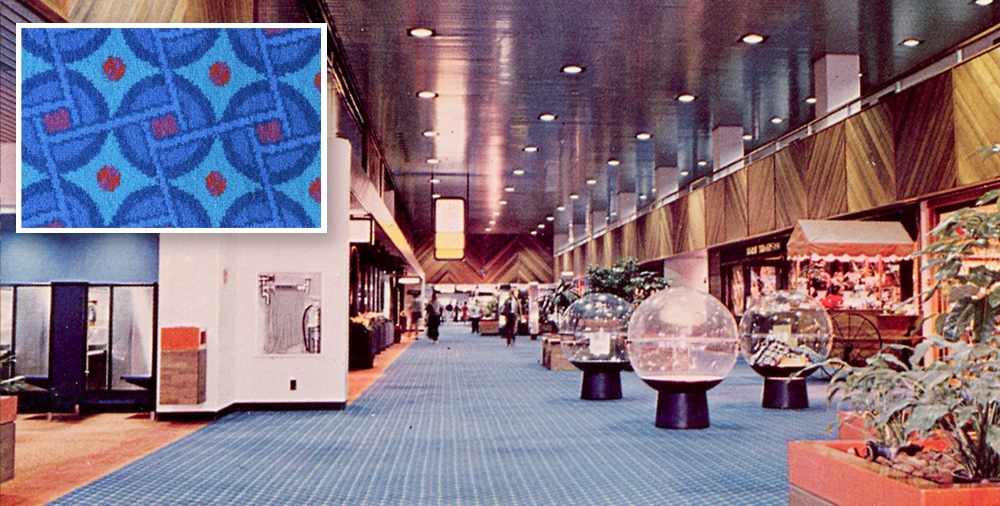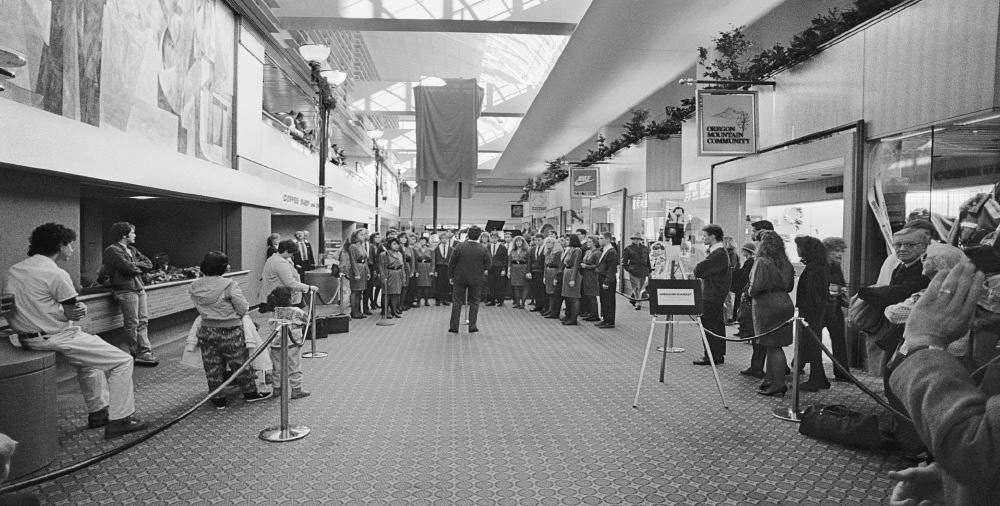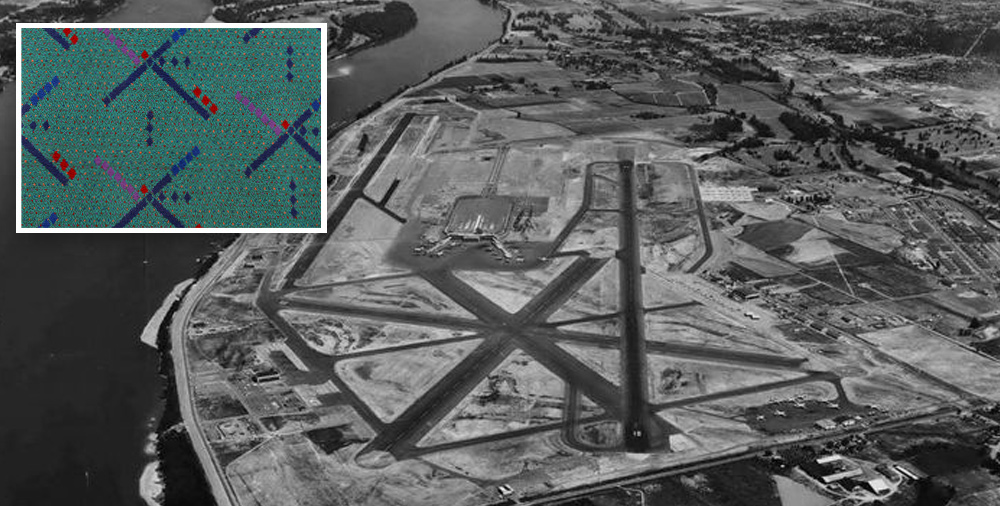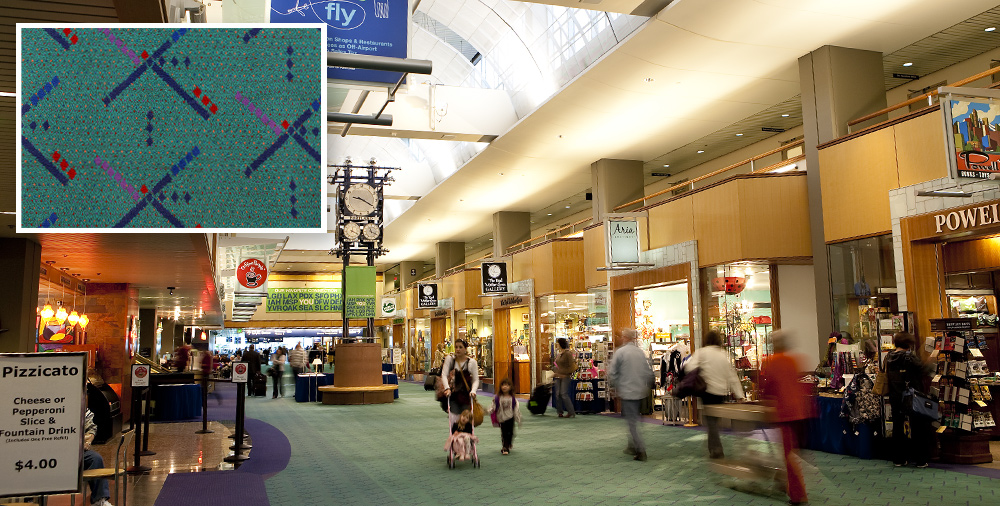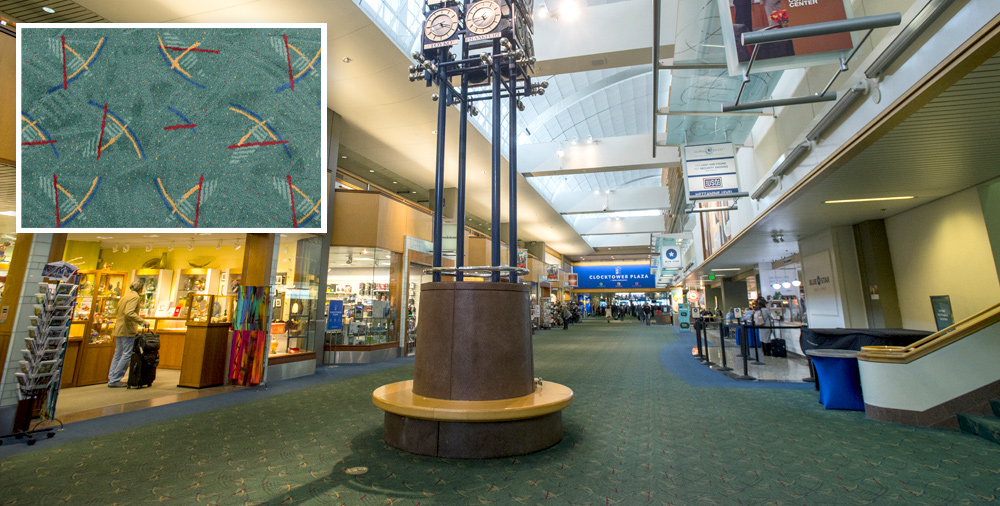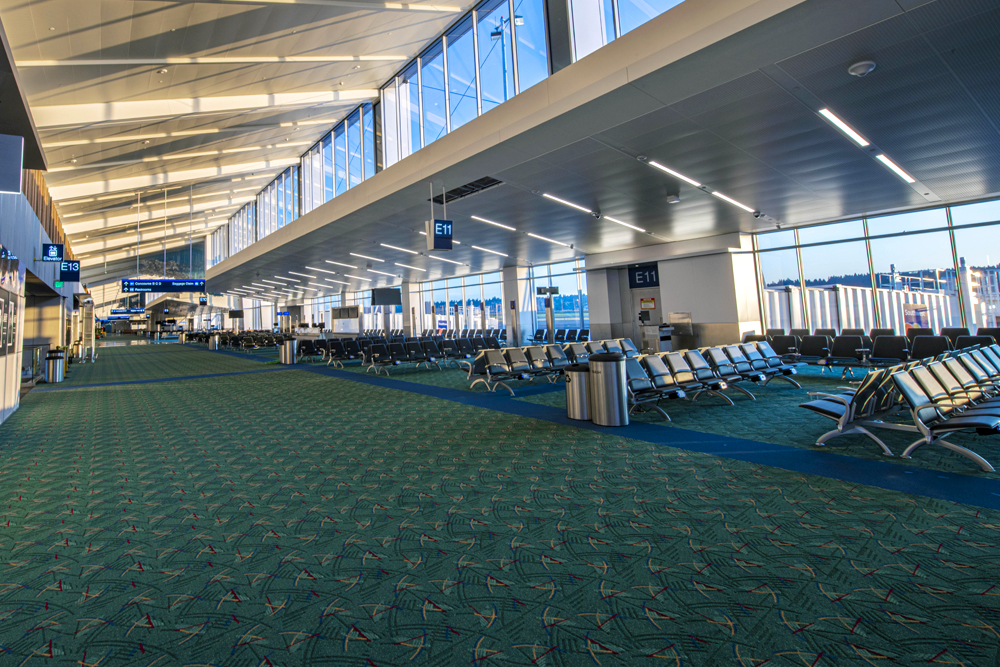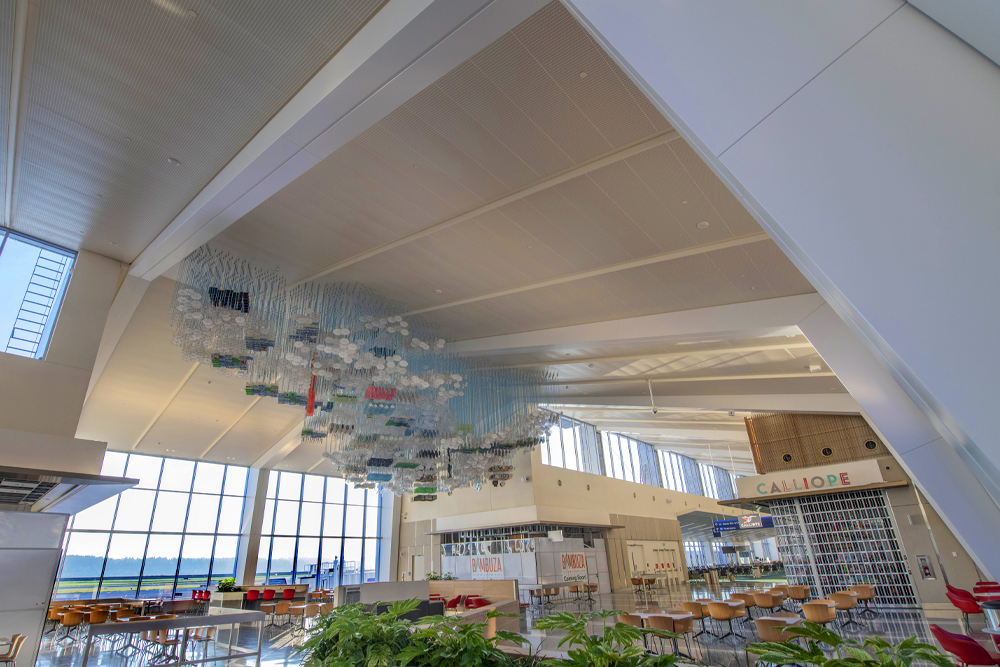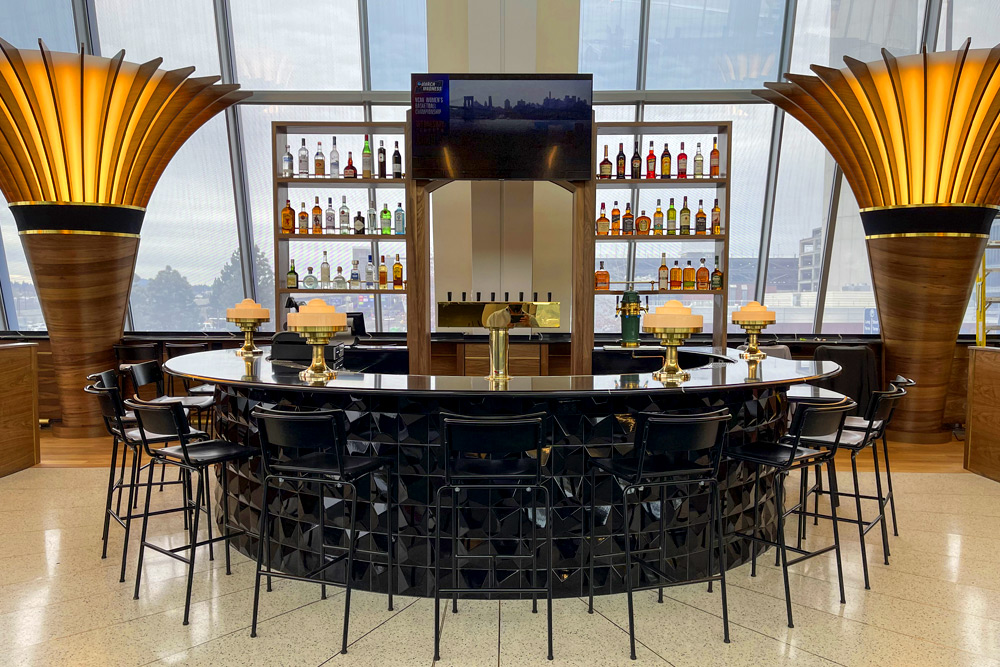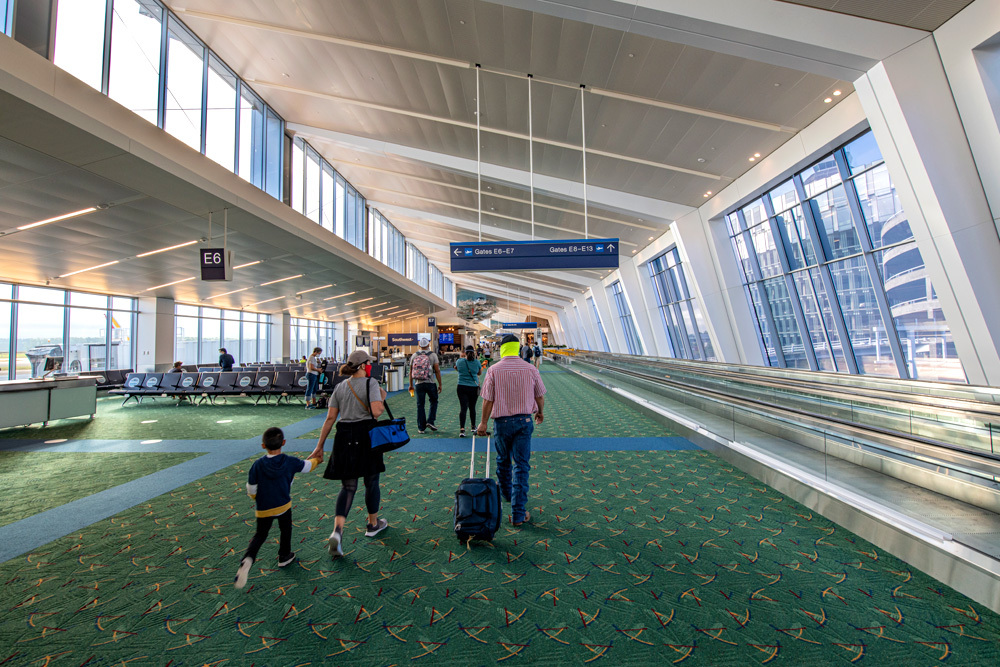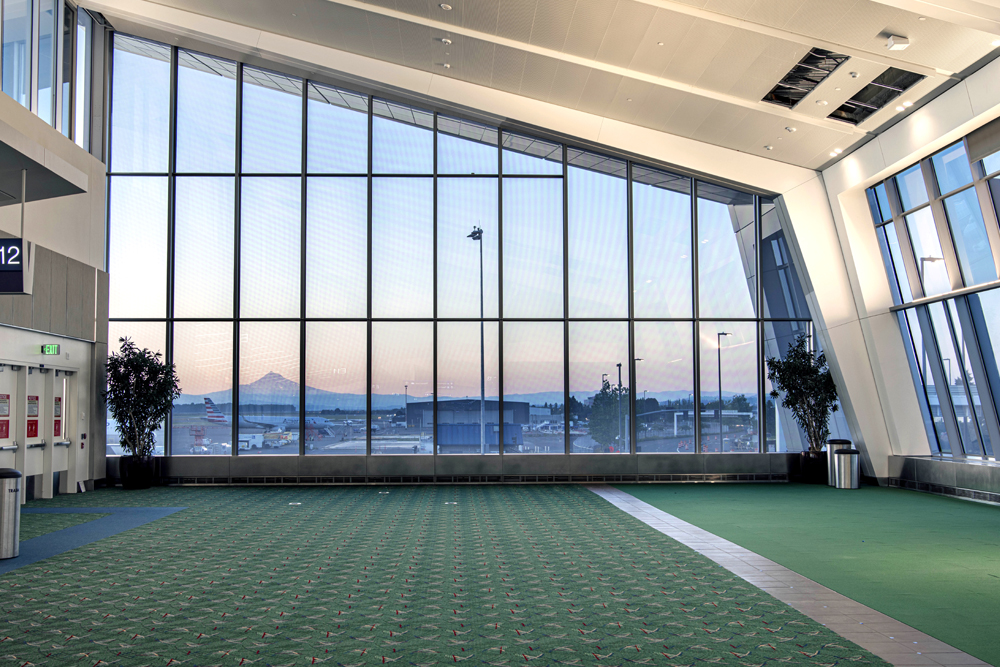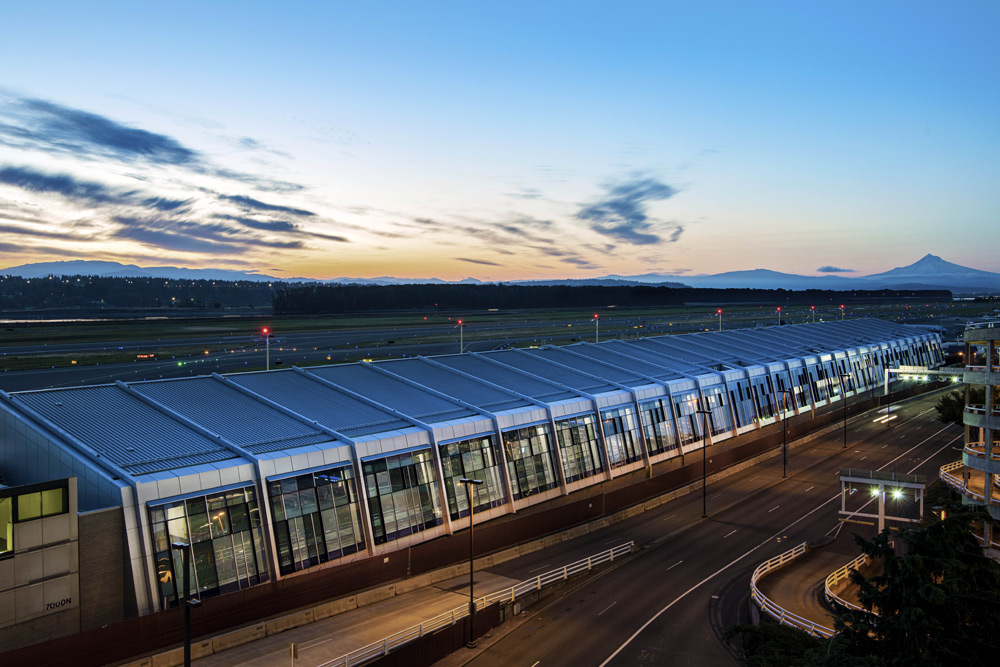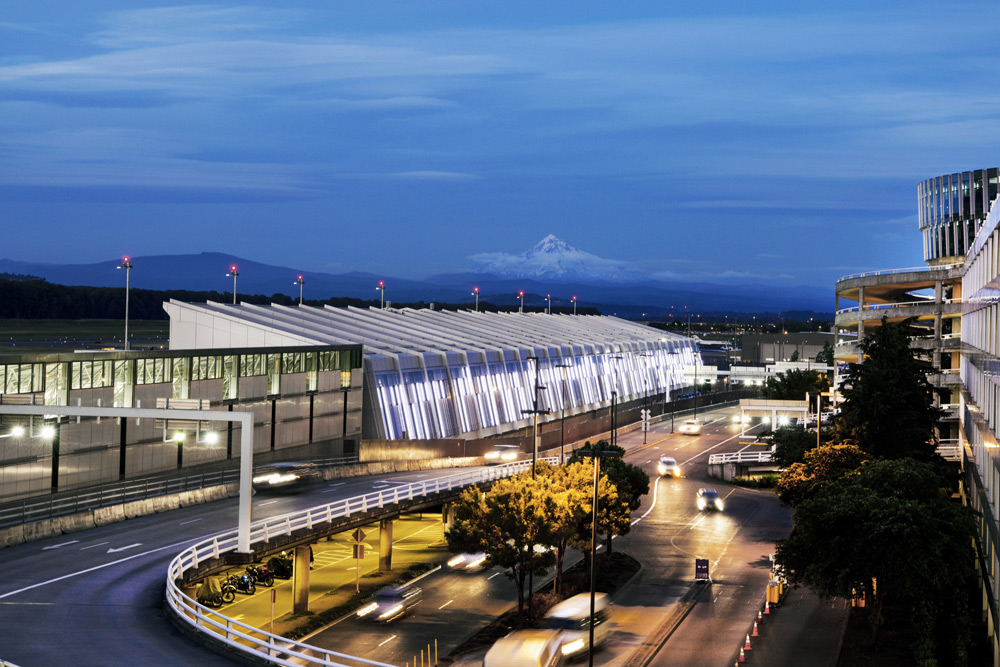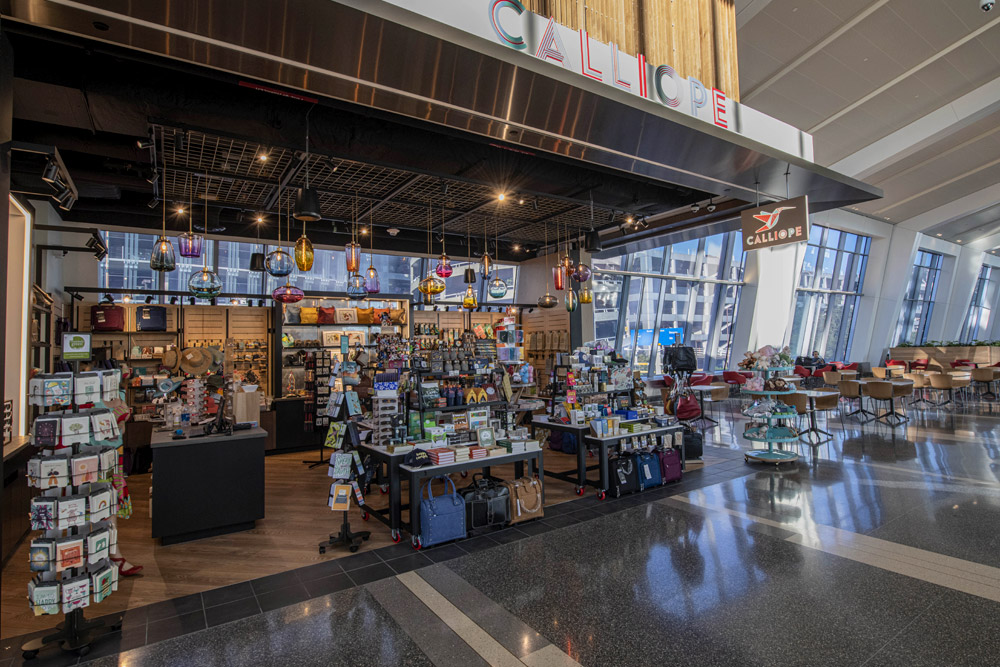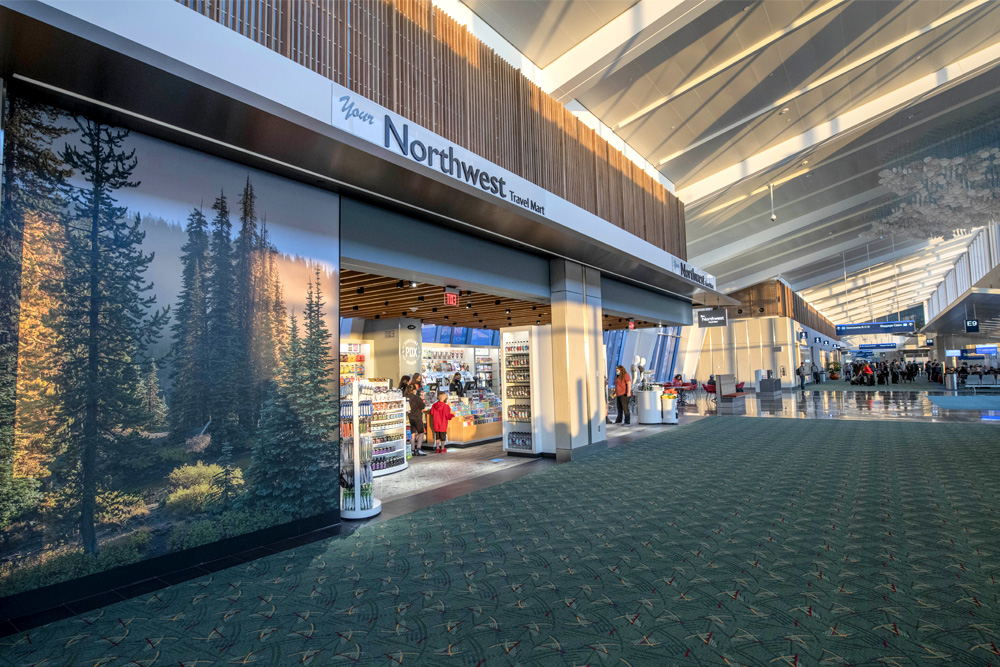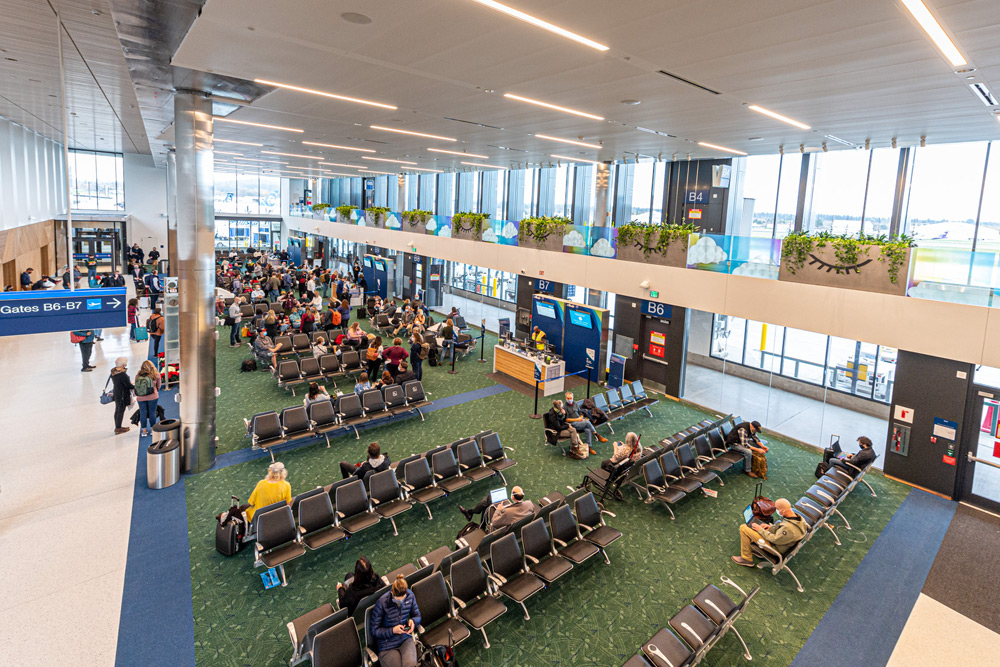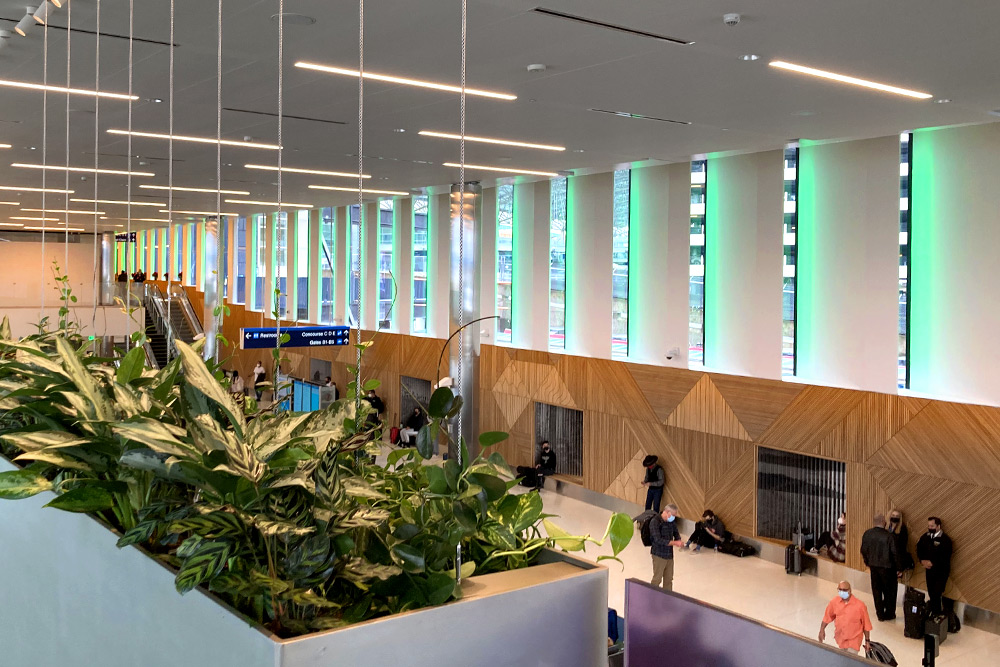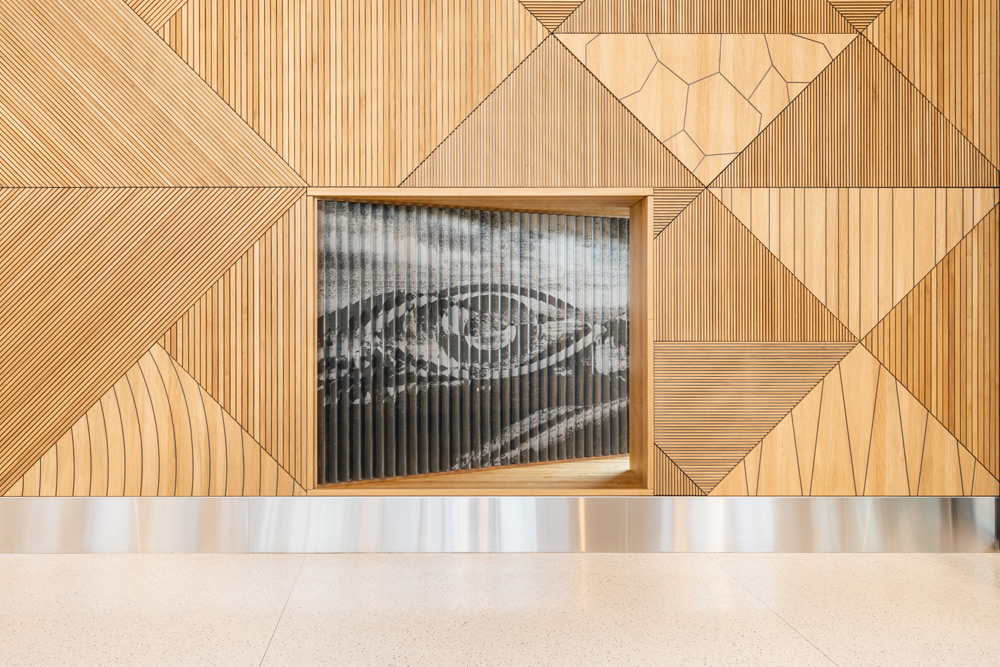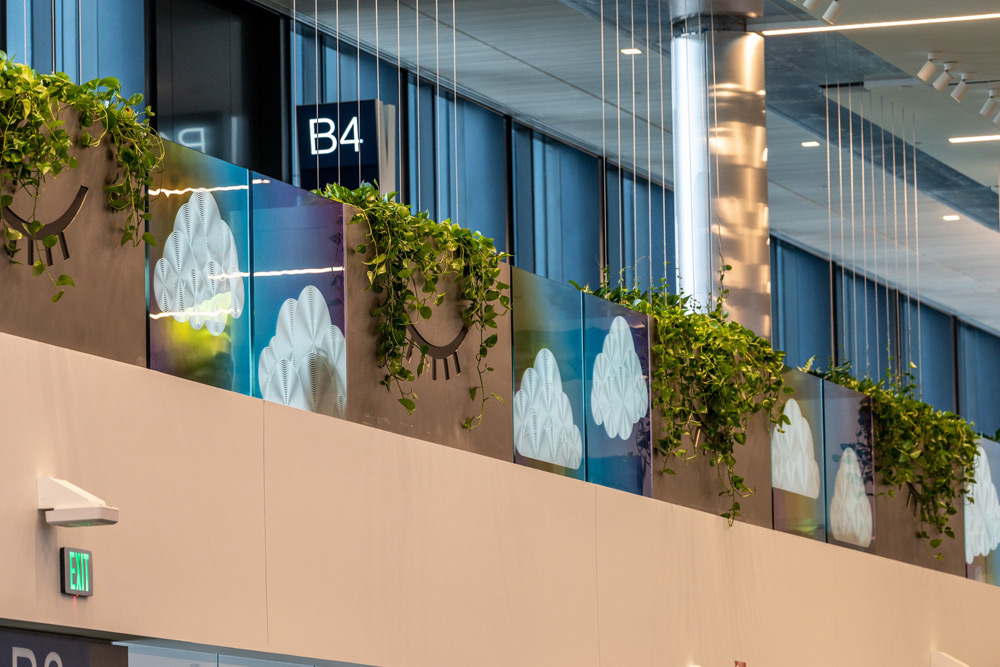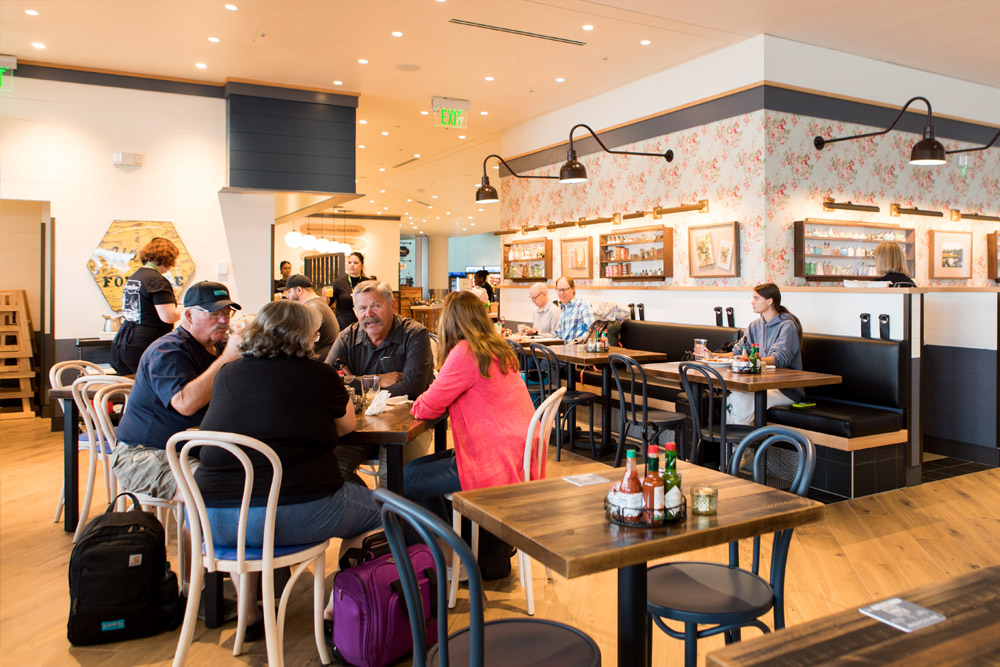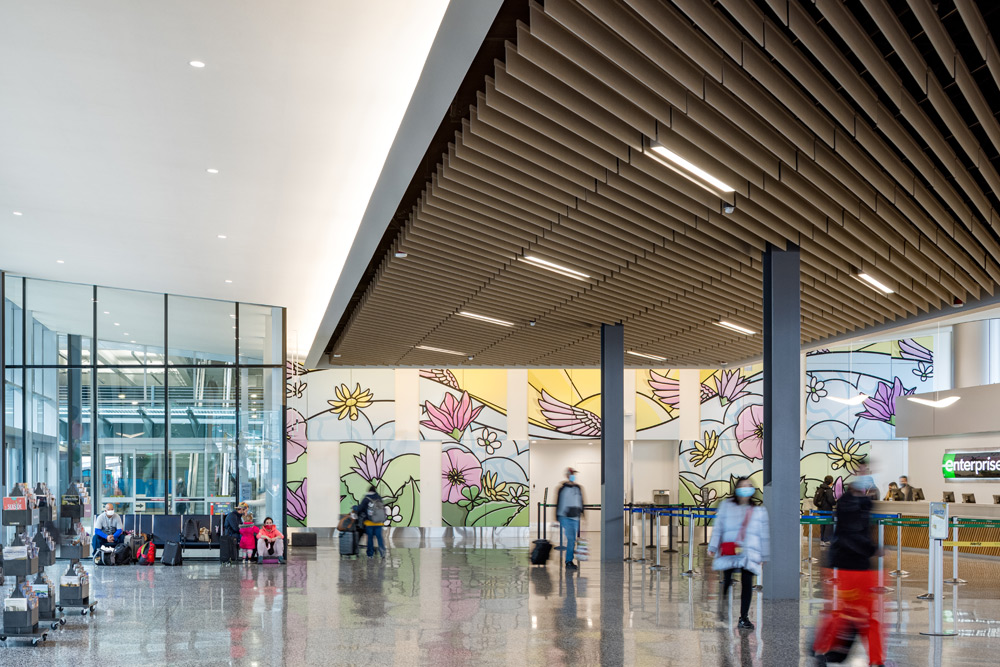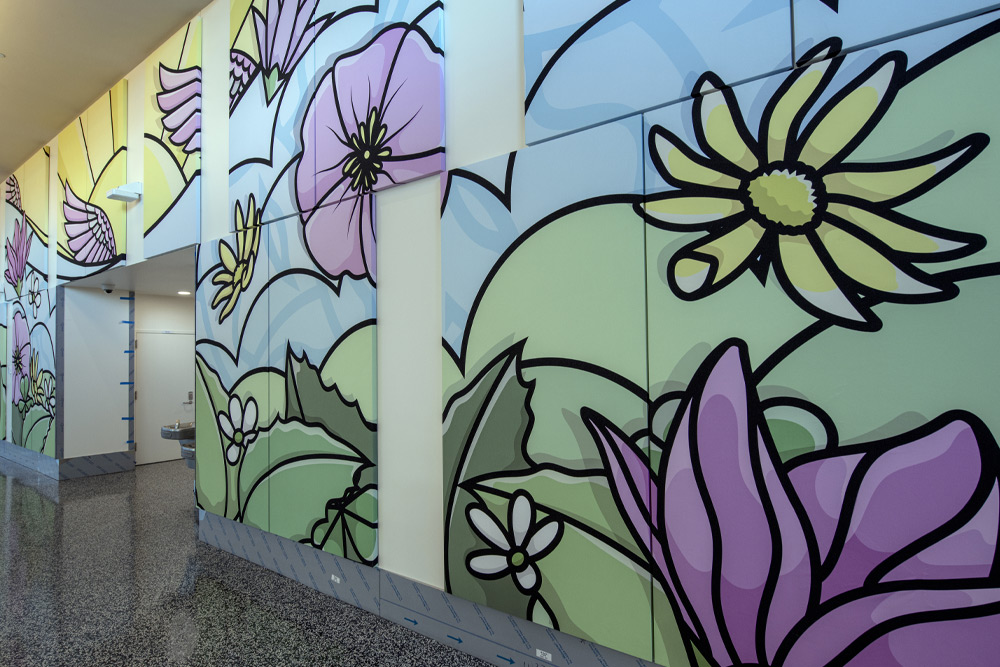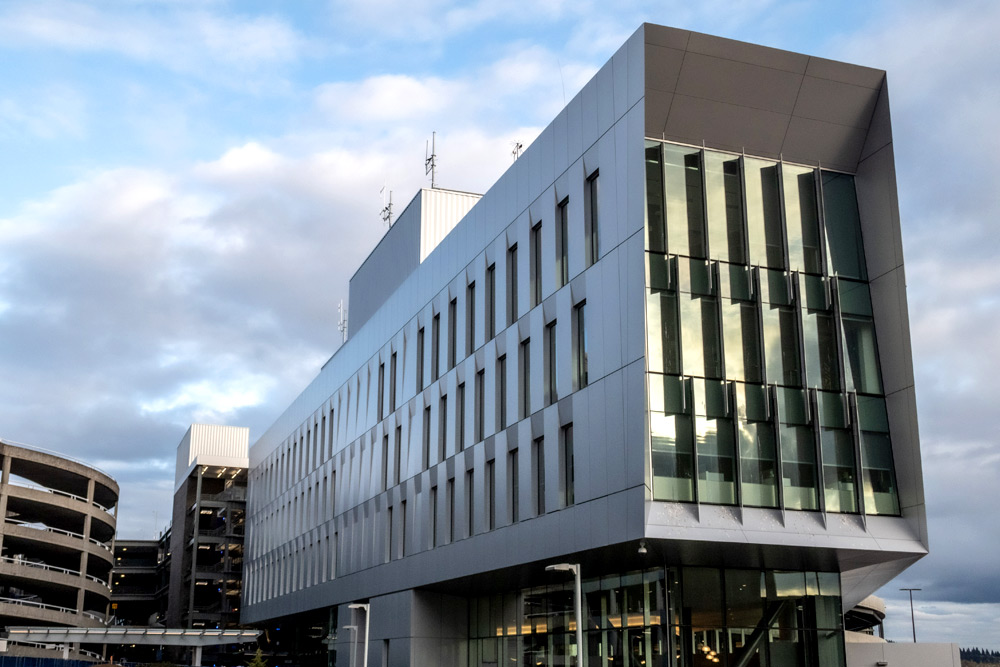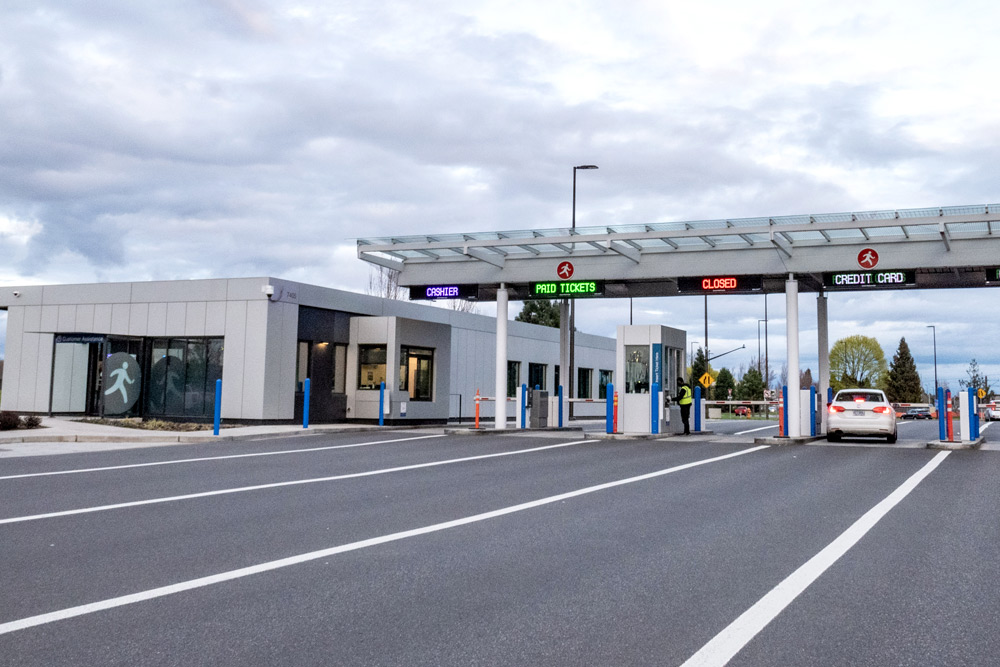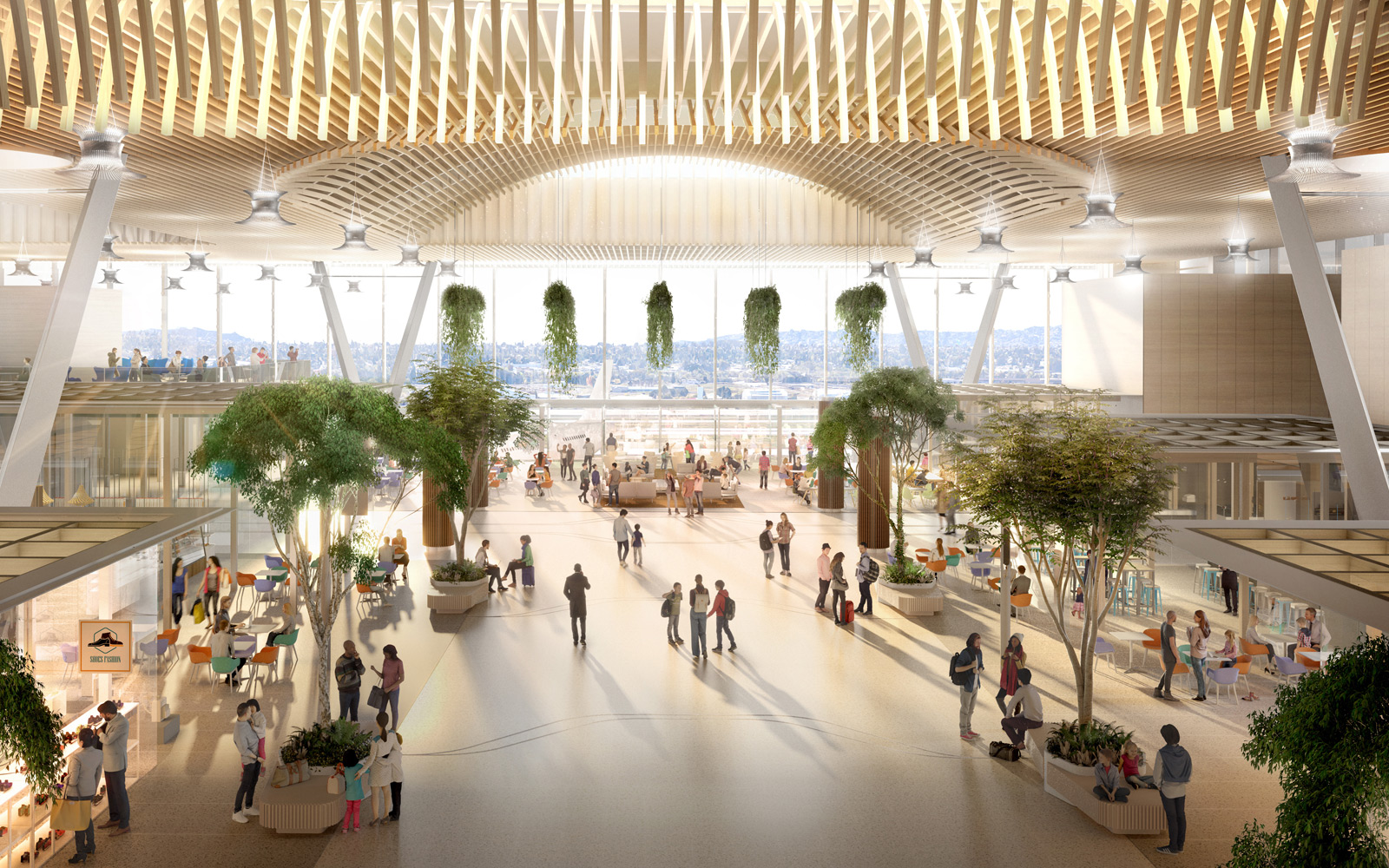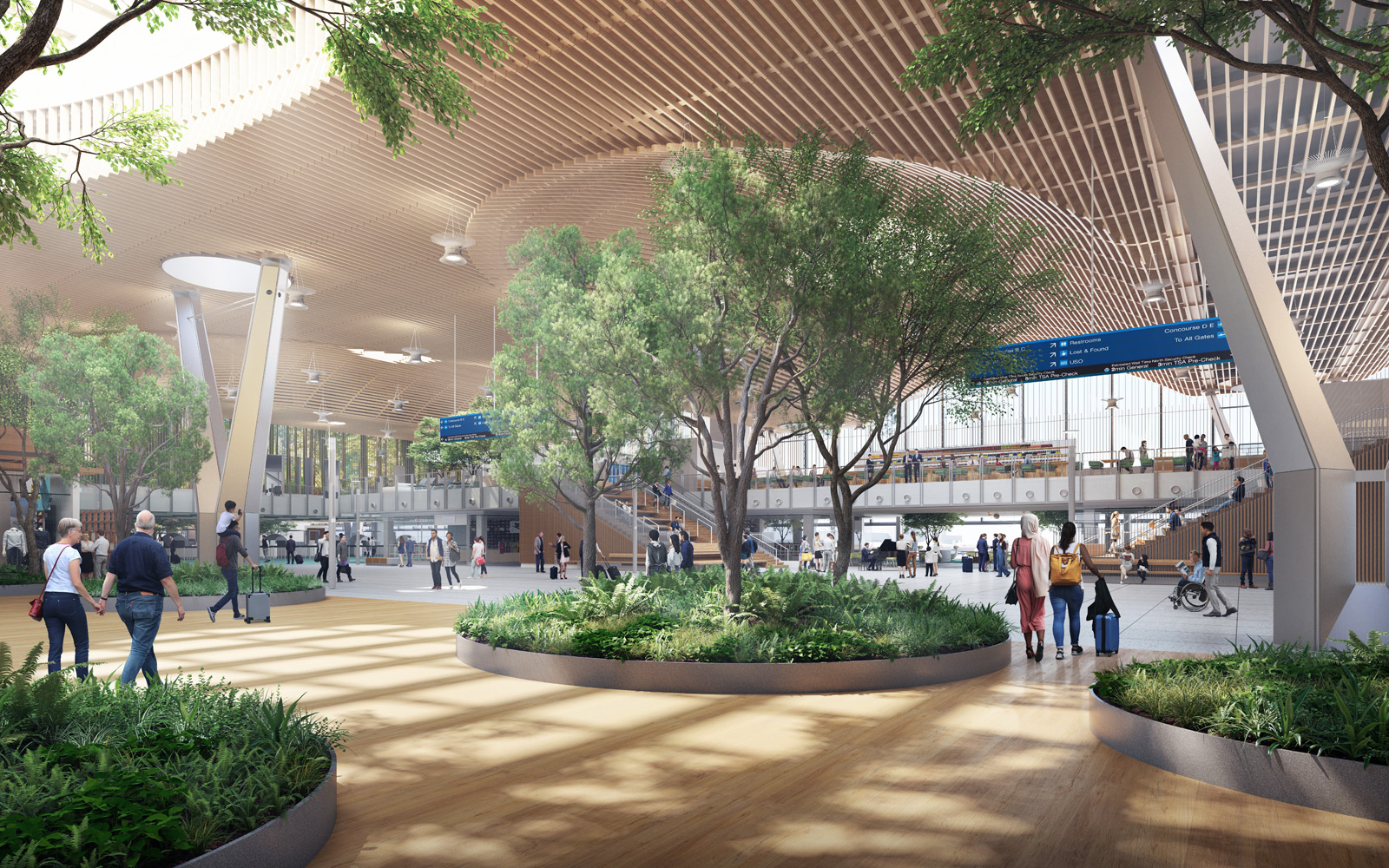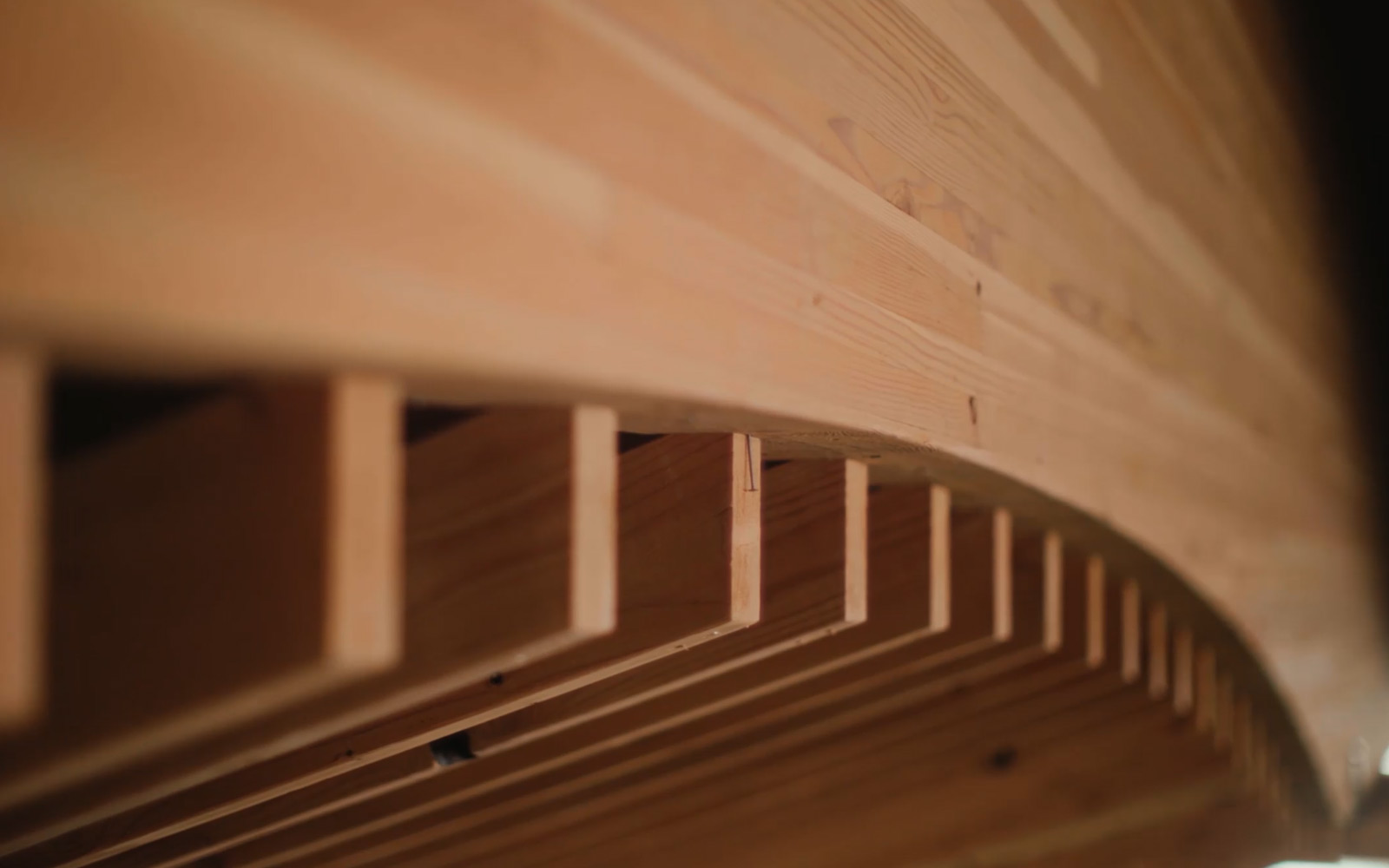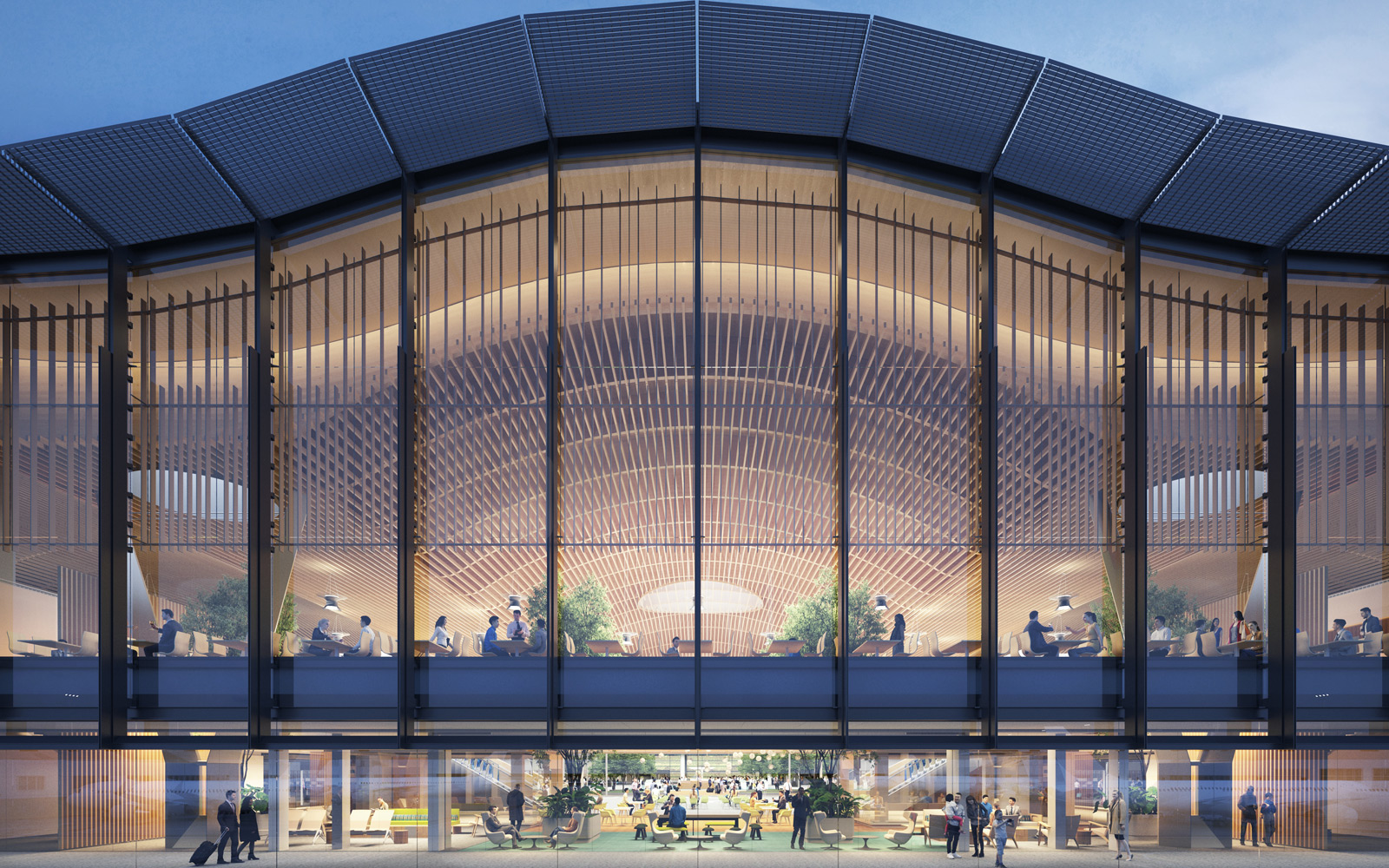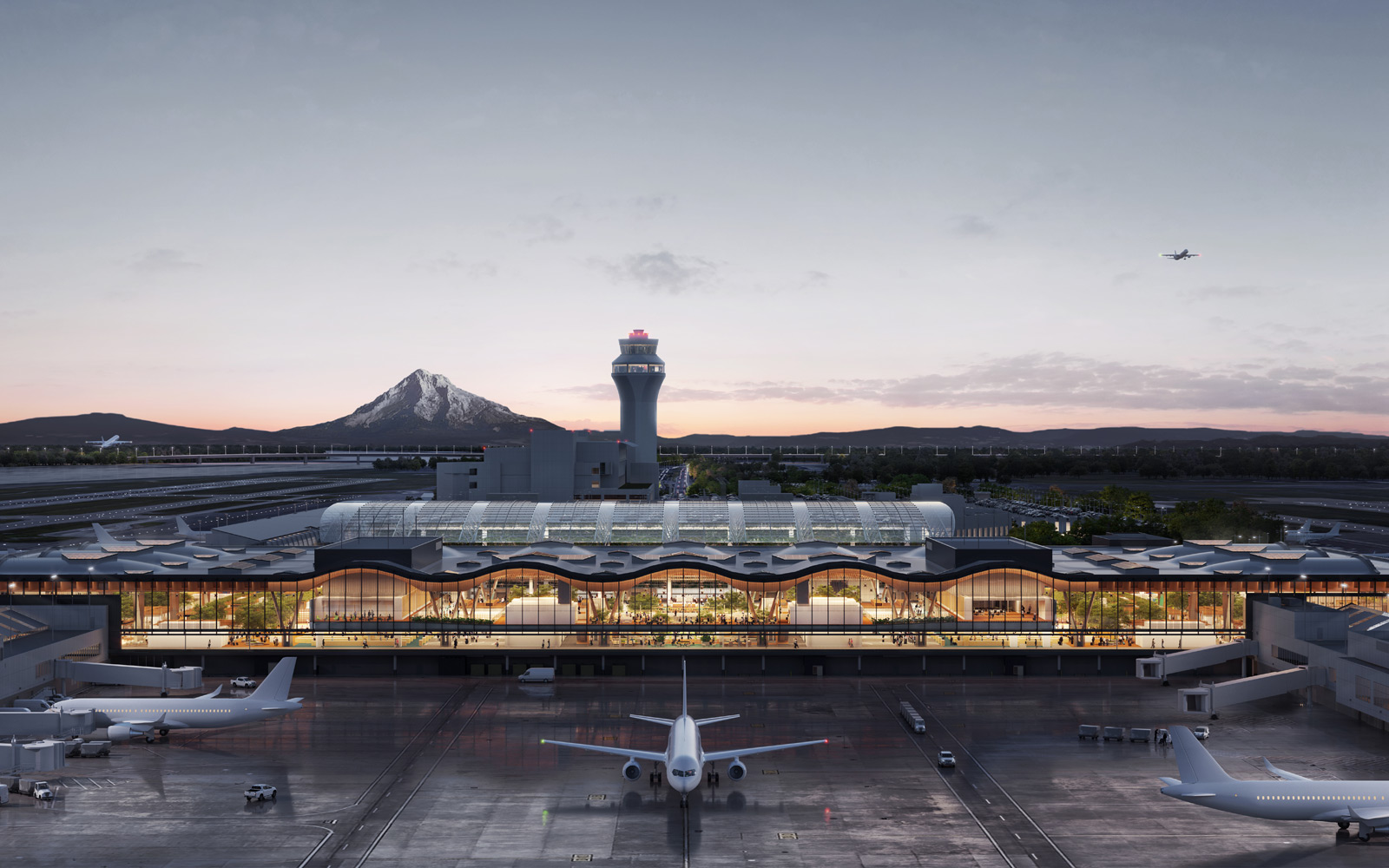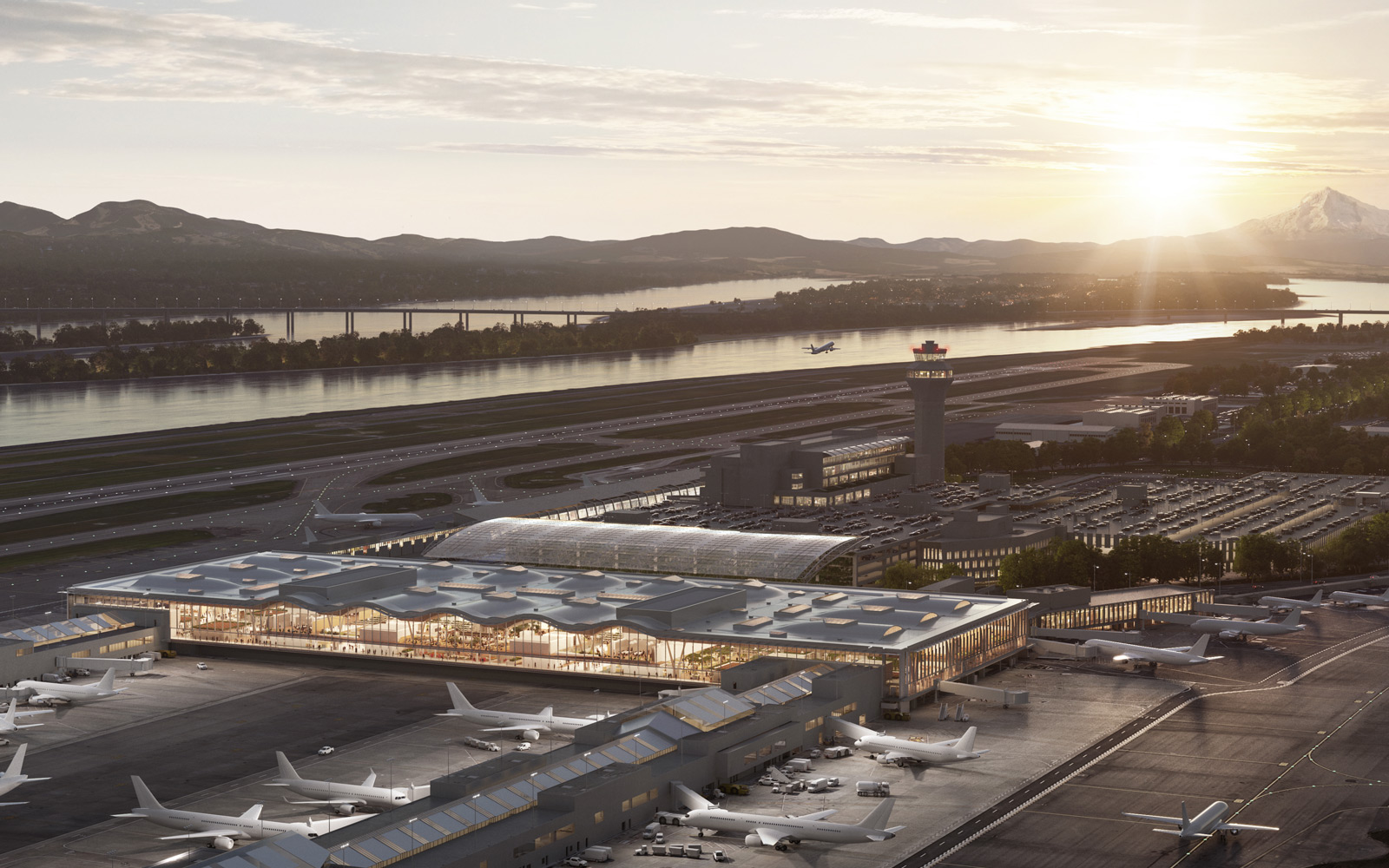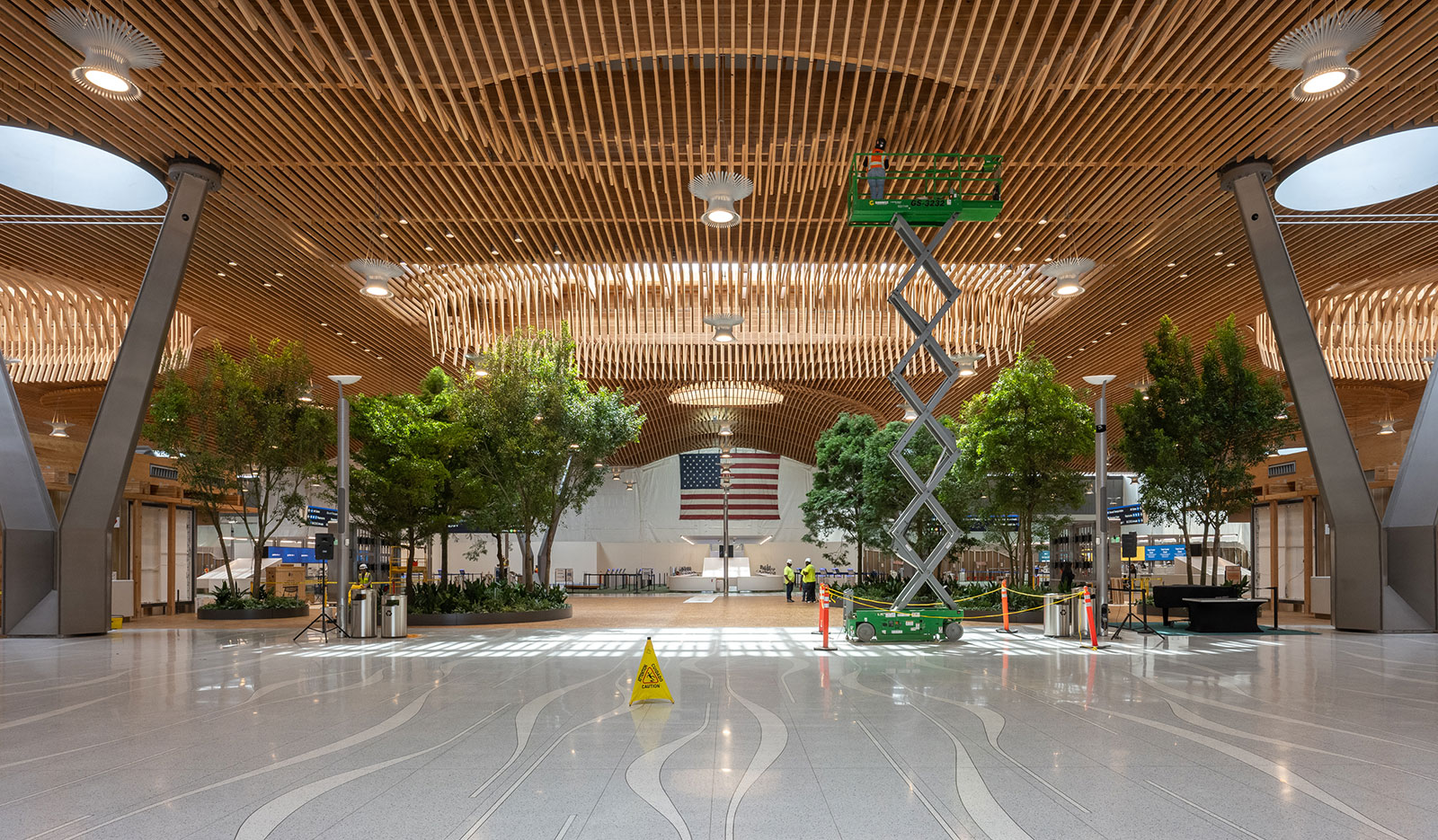
¡La apertura del nuevo PDX es el 14 de agosto de 2024! Nos emociona poder mostrarle lo que más de 30.000 personas locales se unieron para construir. Ya nos imaginamos cómo todos admiran los tragaluces, se toman auto retratos en las alfombras, admiran la vista del aeródromo, y se relajan en los nuevos restaurantes.
Si tenemos un consejo para los viajeros que visitan el nuevo PDX, es este: lleguen antes de lo habitual a su vuelo.
No sólo para admirar el arte y tomar algunas fotos. Cuando añadimos tiempo adicional a nuestra agenda nos ayudará a conocer la fluidez del nuevo espacio.
Usted verá unos cambios muy dramáticos en PDX este agosto. Sin embargo, debido a que estamos implementando los nuevos diseños en dos fases, parte de la construcción continuará hasta principios del año 2026. Durante los próximos 18 meses, todavía encontrará usted muros de construcción y desviaciones. (Dicho esto, el área de reclamo de equipaje y las cuatro salas, es decir, donde usted aborda su vuelo, ¡no cambiarán!)
Estas son cinco cosas que usted debe saber sobre el nuevo PDX – y algunas sugerencias sobre la accesibilidad para las personas que puedan necesitar un poco de ayuda adicional para desplazarse por el aeropuerto:
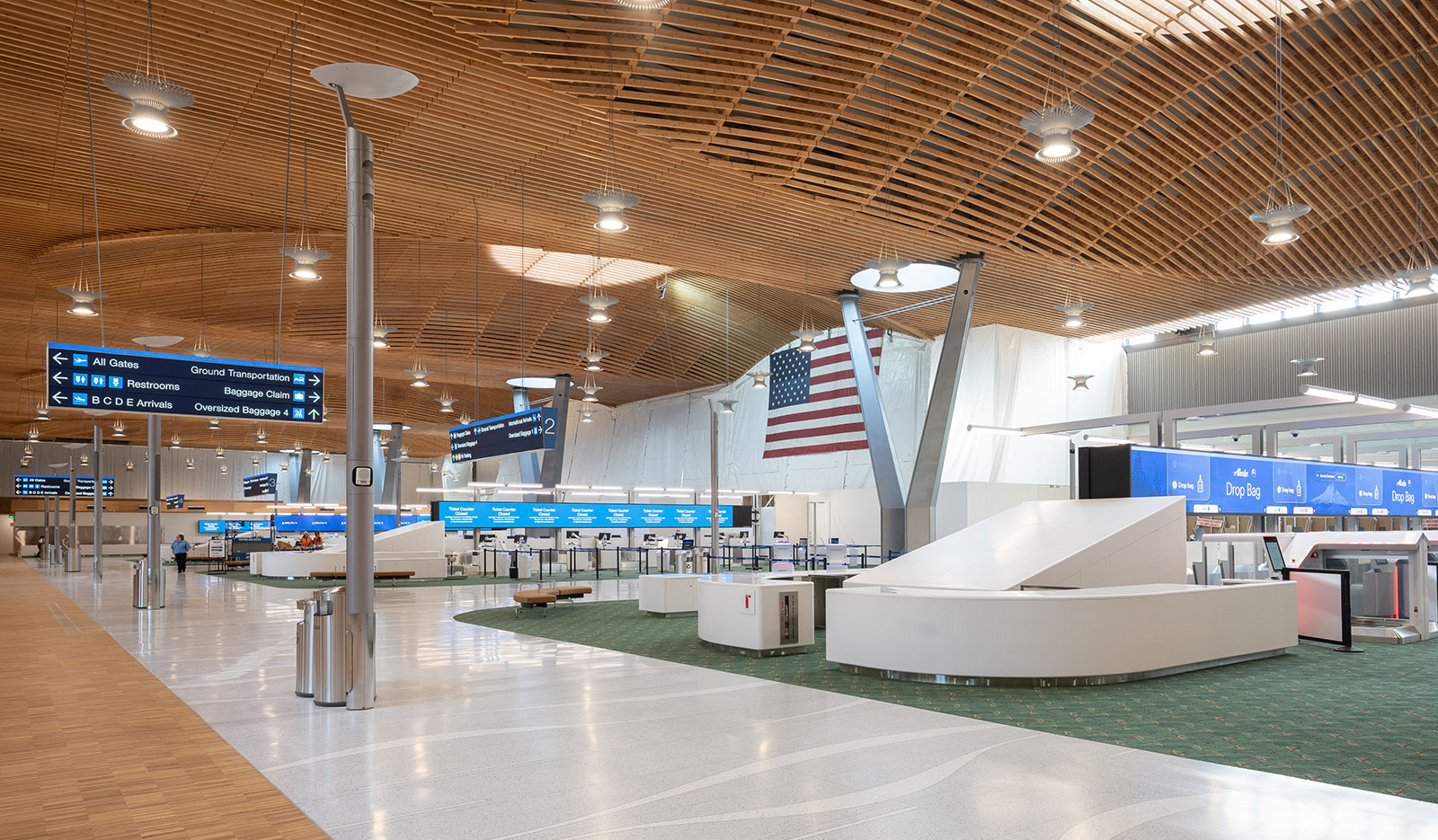 Las nuevas estaciones para registrarse en las aerolíneas de PDX se encuentran perpendiculares al antiguo mostrador de la venta de boletos.
Las nuevas estaciones para registrarse en las aerolíneas de PDX se encuentran perpendiculares al antiguo mostrador de la venta de boletos.Sugerencia PDX #1:
los mostradores de facturación de las aerolíneas de PDX se están trasladando a cuatro “islotes”.
Cómo navegar esto: desde la entrada, siga las señales en el nivel de salidas para encontrar el mostrador de su aerolínea. Si vuela por Alaska, tómese unos minutos para familiarizarse con la nueva entrega automática del equipaje de Alaska en el islote 1.
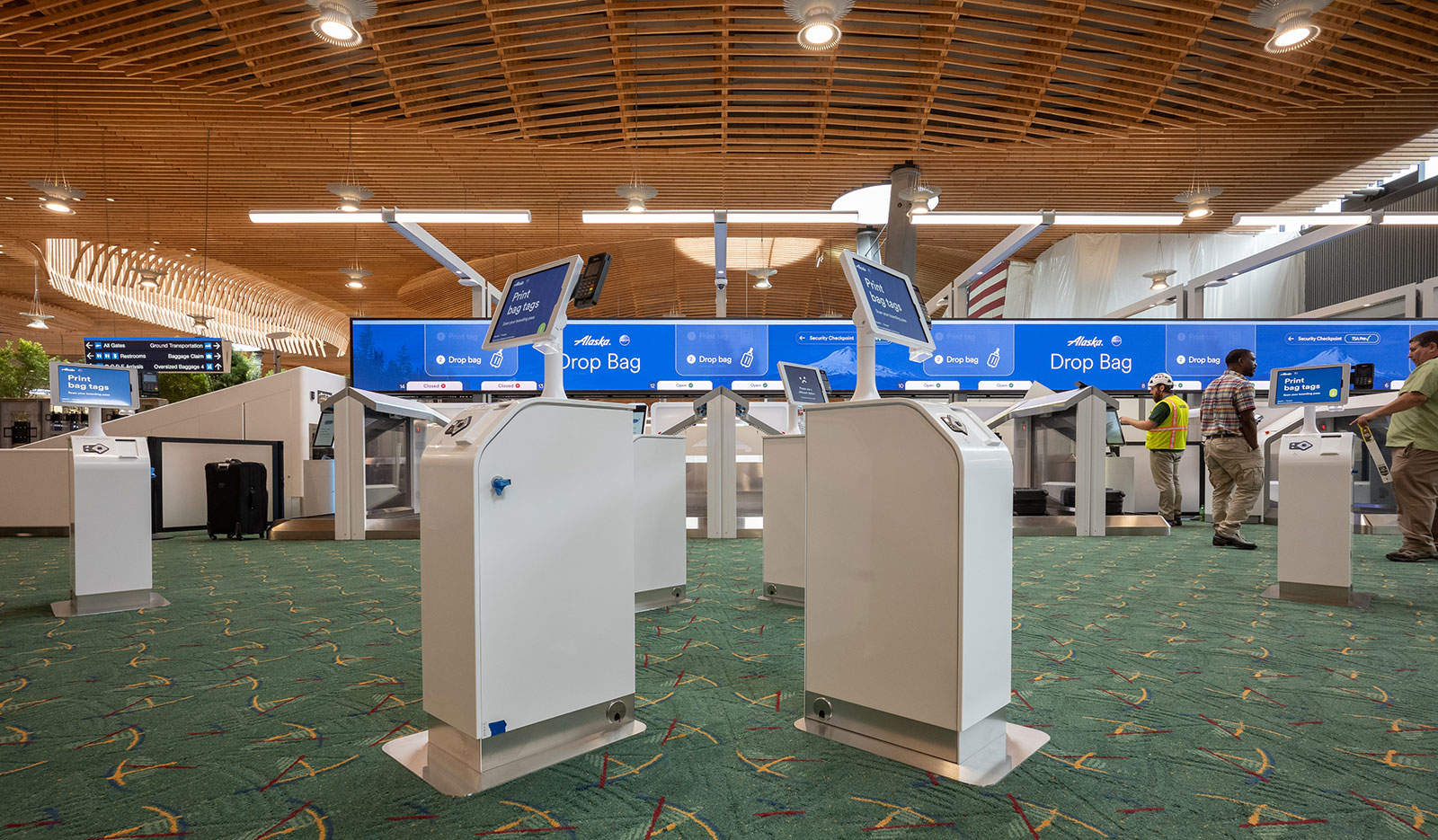 El nuevo depósito automático de equipaje de la Aerolínea Alaska
El nuevo depósito automático de equipaje de la Aerolínea Alaska Consejo de accesibilidad: para obtener asistencia en silla de ruedas hasta su puerta de embarque, notifique a su aerolínea con anticipación. Una vez que se registre en el mostrador de su aerolínea, se encontrará con su asistente de pasajeros en silla de ruedas al final de ese mismo islote. Si tiene alguna pregunta, usted se puede comunicar con todos los despachadores de sillas de ruedas de las aerolíneas llamando al (503) 460-4300.
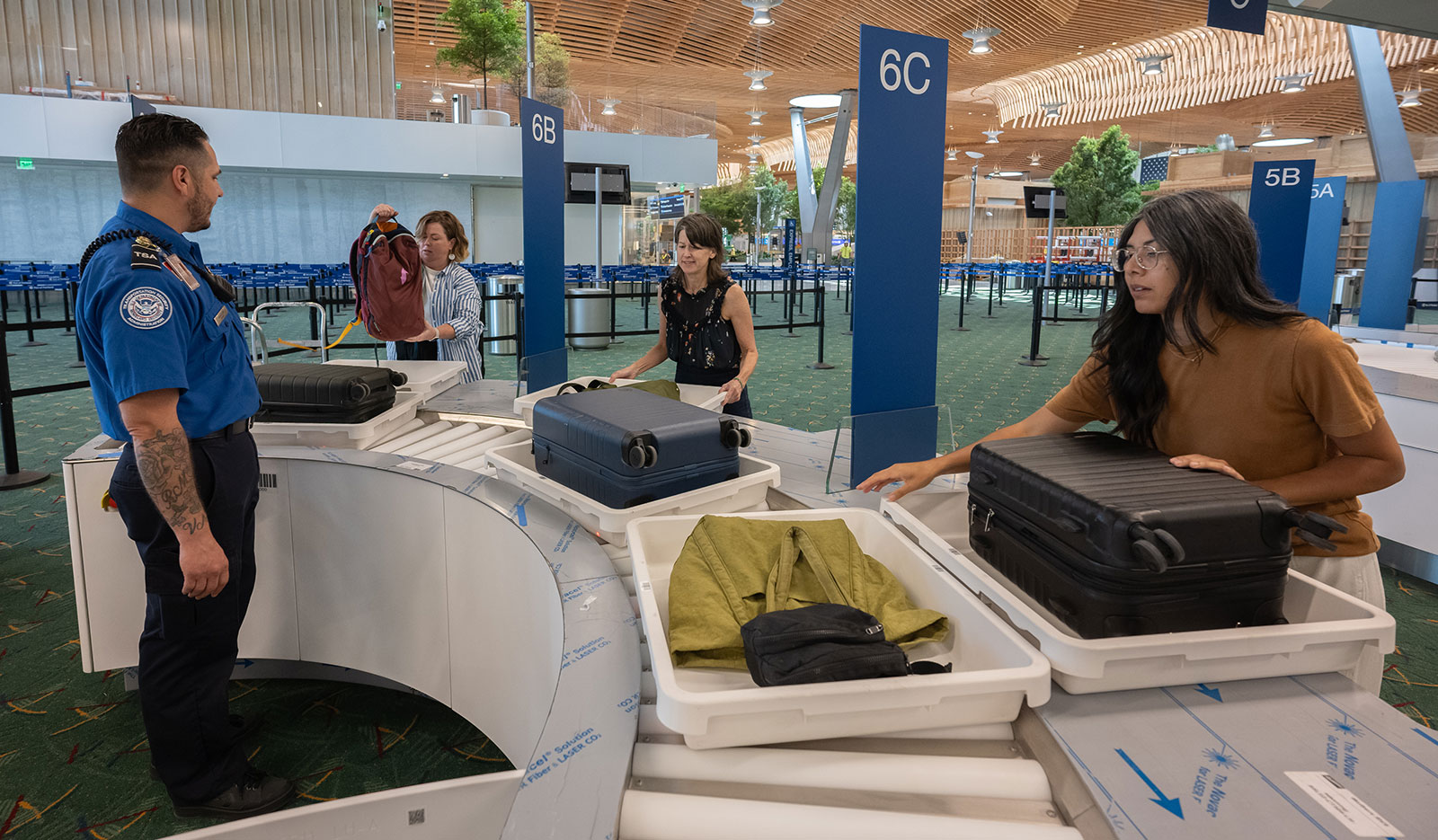 En los nuevos puntos de control de seguridad, tres viajeros pueden cargar sus pertenencias en los contenedores para su revisión al mismo tiempo.
En los nuevos puntos de control de seguridad, tres viajeros pueden cargar sus pertenencias en los contenedores para su revisión al mismo tiempo. Sugerencia PDX #2:
Para ayudar a que las líneas de seguridad se muevan más rápidamente, tres personas pueden cargar sus pertenencias en cada punto de control de la TSA al mismo tiempo.
Cómo navegar esto: No solo habrá más carriles de control, sino que cada una de las nuevas estaciones de control con curvas tiene tres puntos donde los viajeros pueden cargar sus pertenencias en contenedores y en la cinta transportadora. (Pronto llegan: las pantallas que estiman el tiempo para pasar por seguridad).
Consejo de accesibilidad: si usted necesita ayuda adicional para pasar por la línea de control, comuníquese con el programa “TSA Cares” en línea o por teléfono al (855) 787-2227. Un agente se reunirá con usted.
Sugerencia PDX #3:
si usted vuela por las salas B o E, su caminata será más larga— durante los próximos 18 meses
Para guiar de forma segura a los viajeros por los trabajos de construcción de la fase 2 desde ahora hasta principios del año 2026, hemos revertido los desvíos de construcción. Lo sentimos – sabemos que esto duele.
Cómo navegar esto: Planifique tiempo adicional para llegar o salir de las puertas de embarque en las salas B o E. (Sin embargo, si vuela al suroeste o en vuelos más prolongados a Alaska, ahora tendrá viajes más cortos a las salas C y D).
Consejo de accesibilidad: estamos agregando sillas y bancos adicionales para que los viajeros descansen en el camino. ¡Y no dude en pedir ayuda en silla de ruedas!
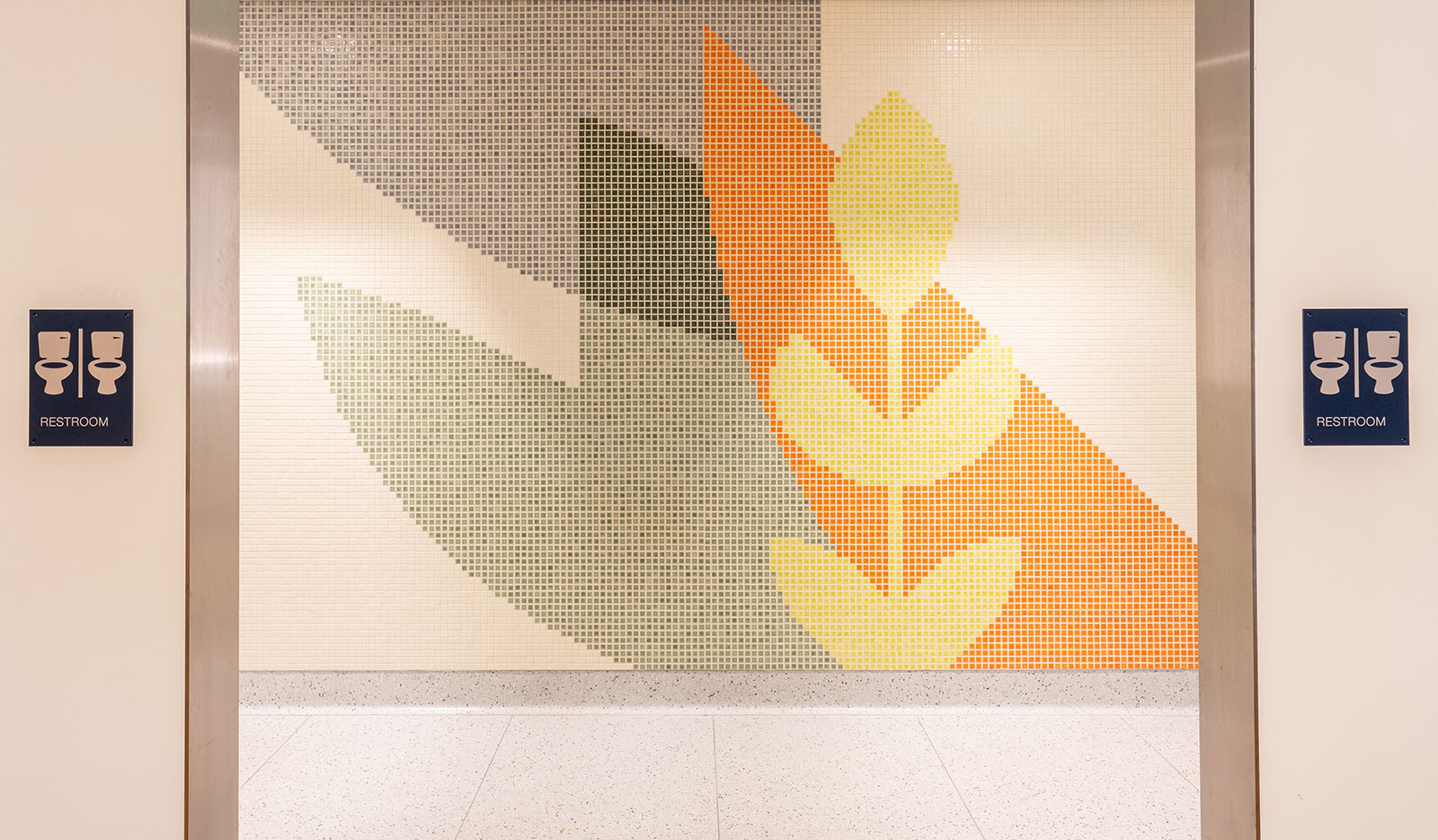 Los mosaicos del baño de la diseñadora Sara Schmidt cuentan con azulejos hechos por Pratt + Larson de Portland.
Los mosaicos del baño de la diseñadora Sara Schmidt cuentan con azulejos hechos por Pratt + Larson de Portland. Sugerencia PDX #4:
Hemos movido los baños. Ahora los puede encontrar cerca de los asientos de la estancia en el corazón de la terminal.
Cómo navegar por esto: Para los baños de hombres y mujeres, quédese en el piso principal. Para nuestros nuevos baños privados para todos los usuarios, diríjase al nivel del entresuelo. ¡Agregaremos aún más baños cuando se abra la siguiente fase el año 2026!
Consejo de accesibilidad: el ascensor que lleva a los baños superiores está al norte de los asientos de la estancia. (Esta se encuentra a la derecha, si usted viene desde el despacho de los boletos).
Sugerencia PDX #5:
Durante los próximos 18 meses, los pasajeros que lleguen utilizarán los carriles de salida temporales.
En 2026, abriremos los carriles de salida permanentes en los extremos norte y sur de la terminal principal. Mientras tanto, sin embargo, usted saldrá por el centro del edificio, hacia la misma zona por la que pasan los viajeros que salen. (¡Podría haber mucha gente, pero recuerde que es temporal!)
Cómo navegar todo esto: una vez que su avión aterrice y camine desde la puerta de embarque hasta la terminal principal, usted siga las señales que le dirigen al área de recogida de equipaje hasta llegar a la salida del área de seguridad.
Consejo de accesibilidad: si necesita usted ayuda adicional para llegar al área de reclamo del equipaje y transporte terrestre, llame a uno de los trabajadores de PDX que usan chaquetas azules.
Un último consejo mientras usted explora el nuevo PDX:
¡no dude usted en mirar hacia arriba! ¡Mire hacia abajo! Por supuesto asegúrese de mirar a su alrededor – para evitar toparse con todos los demás viajeros que hacen lo mismo. (Le decimos esto aquí por propia experiencia).
